Trending Post : 52 Best Things to do in Ireland


Great Travel Writing Examples from World Renowned Travel Writers
Are you ready to be a better travel writer? One of the best ways to do this is to read great travel writing examples from great travel writers.
Writing about travel in a way that keeps your reader reading is not always easy. Knowing how to write an irresistible first paragraph to entice the reader to keep reading is key. Writing a lede paragraph that convinces the reader to finish the article, story or book is great travel writing. This article features travel writing examples from award-winning travel writers, top-selling books, New York Times travel writers, and award-winning travel blogs.
Ads are how we pay our bills and keep our blog free for you to enjoy. We also use affiliate links; if you make a purchase through them, we may receive a small commission at no cost to you.

The writers featured in this article are some of my personal favorite travel writers. I am lucky to have met most of them in person and even luckier to consider many friends. Many I have interviewed on my podcast and have learned writing tips from their years of travel writing, editing and wisdom.
11 Great Travel Writing Examples
Writing with feeling, tone, and point of view creates a compelling story. Below are examples of travel writing that include; first paragraphs, middle paragraphs, and final paragraphs for both travel articles as well as travel books.
I hope the below examples of travel writing inspire you to write more, study great travel writing and take your writing to a higher level.
Writing Example of a Travel Book Closing Paragraphs

Don George is the author of the award-winning anthology The Way of Wanderlust: The Best Travel Writing of Don George , and the best-selling travel writing guide in the world: How to Be a Travel Writer .
He is currently Editor at Large for National Geographic Travel, and has been Travel Editor at the San Francisco Examiner-Chronicle, Salon, and Lonely Planet.
I had the wonderful opportunity to see Don speak at Tbex and read from one of his books as well as interview him on the Break Into Travel Writing podcast. You can listen to the full podcast here .
Below is the closing of Don’s ebook: Wanderlust in the Time of Coronavirus: Dispatches from a Year of Traveling Close to Home
I continued hiking up to Lost Trail and then along Canopy View Trail. Around noon I serendipitously came upon a bench by the side of the trail, parked my backpack, and unpacked my lunch. Along with my sandwiches and carrot sticks, I feasted on the tranquility and serenity, the sequoia-swabbed purity of the air, the bird and brook sounds and sun-baked earth and pine needle smells, the sunlight slanting through the branches, the bright patch of blue sky beyond.
At one point I thought of shinrin-yoku, forest bathing, the Japanese practice that has become widely popular in the U.S. This was a perfect example of shinrin-yoku, I thought: Here I am, alone in this forest, immersed in the sense and spirit of these old-growth redwoods, taking in their tranquility and timelessness, losing myself to their sheer size and age and their wild wisdom that fills the air.
I sat there for an hour, and let all the trials, tremors, and tribulations of the world I had left in the parking lot drift away. I felt grounded, calm, quiet—earth-bound, forest-embraced.
In another hour, or two, I would walk back to the main paved trail, where other pilgrims would be exclaiming in awe at the sacred sequoias, just as I had earlier that day.
But for now, I was content to root right here, on this blessed bench in the middle of nowhere, or rather, in the middle of everywhere, the wind whooshing through me, bird-chirps strung from my boughs, toes spreading under scratchy pine needles into hard-packed earth, sun-warmed canopy reaching for the sky, aging trunk textured by time, deep-pulsing, in the heart of Muir Woods.
- You can read the whole story here: Old Growth: Hiking into the Heart of Muir Woods
- Please also download Don’s free ebook here: Wanderlust in the Time of Coronavirus
- In addition to writing and editing, Don speaks at conferences, lectures on tours around the world, and teaches travel writing workshops through www.bookpassage.com .

Writing Example of a Travel Book Intro Paragraphs
Francis tapon.

Francis Tapon , author of Hike Your Own Hike and The Hidden Europe , also created a TV series and book called The Unseen Africa, which is based on his five-year journey across all 54 African countries.
He is a three-time TEDx speaker. His social media username is always FTapon. I interviewed Francis on the Break Into Travel Writing podcast about “How to Find An Original Point of View as a Travel Writer “. You can listen to the full podcast here .
Below is the opening of Francis’ book, The Hidden Europe:
“This would be a pretty lousy way to die,” I thought.
I was locked in an outhouse with no way out. Outhouses sometimes have two latches—one on the outside and one on the inside. The outside latch keeps the door shut to prevent rodents and other creatures who like hanging out in crap from coming in. Somehow, that outer latch accidentally closed, thereby locking me in this smelly toilet. I was wearing a thin rain jacket. The temperature was rapidly dropping.
“This stinks,” I mumbled. It was midnight, I was above the Arctic Circle, and the temperatures at night would be just above freezing. There was no one around for kilometers. If I didn’t get out, I could freeze to death in this tiny, smelly, fly-infested shithole.
My mom would kill me if I died so disgracefully. She would observe that when Elvis died next to a toilet, he was in Graceland. I, on the other hand, was in Finland, not far from Santa Claus. This Nordic country was a jump board for visiting all 25 nations in Eastern Europe.
You can find his book on Amazon: The Hidden Europe: What Eastern Europeans Can Teach Us
For $2 a month, you can get Francis’ book as he writes it: Patreon.com/ftapon
Intro (Lede) Paragraph Examples of Great Travel Writing Articles
Michele peterson.

Former banking executive Michele Peterson is a multi-award-winning travel and food writer who divides her time between Canada, Guatemala, and Mexico (or the nearest tropical beach).
Former banking executive Michele Peterson is a multi-award-winning travel and food writer who divides her time between Canada, Guatemala, and Mexico (or the nearest tropical beach). Her writing has appeared in Lonely Planet’s Mexico from the Source cookbook, National Geographic Traveler, Conde Nast’s Gold List, the Globe and Mail, Fifty-five Plus and more than 100 other online and print publications.
She blogs about world cuisine and sun destinations at A Taste for Travel website. I met Michele on my first media trip that took place in Nova Scotia, Canada. I also had the pleasure of interviewing about “ Why the Odds are in Your Favor if you Want to Become a Travel Writer” . You can listen to the full podcast here .
Michele’s Lede Paragraph Travel Writing Example
I’m hiking through a forest of oak trees following a farmer who is bleating like a pied piper. Emerging from a gully is a herd of black Iberian pigs, snuffling in response. If they weren’t so focused on following the swineherd, I would run for the hills. These pigs look nothing like the pink-cheeked Babe of Hollywood fame.
These are the world’s original swine, with lineage dating back to the Paleolithic Stone Age period where the earliest humans decorated Spain’s caves with images of wild boars. Their powerful hoofs stab the earth as they devour their prized food, the Spanish bellota acorn, as fast as the farmer can shake them from the tree with his long wooden staff. My experience is part of a culinary journey exploring the secrets of producingjamón ibérico de Bellota, one of the world’s finest hams.
You can read the full article here: Hunting for Jamón in Spain
Perry Garfinkel

Perry Garfinkel has been a journalist and author for an unbelievable 40 years, except for some years of defection into media/PR communications and consulting.
He is a contributor to The New York Times since the late ’80s, writing for many sections and departments. He has been an editor for, among others, the Boston Globe, the Middlesex News, and the Martha’s Vineyard Times.
He’s the author of the national bestseller “ Buddha or Bust: In Search of the Truth, Meaning, Happiness and the Man Who Found Them All ” and “ Travel Writing for Profit and Pleasure “.
Perry has been a guest on my podcast twice. He gave a “ Master Class in Travel Writing ” you can listen to the full podcast here . He also shared “ How to Find Your Point Of View as a Travel Writer ” you can listen to the full episode here .
Perry’s Lede Travel Article Example from the New York Times
SAN FRANCISCO — A block off Grant Avenue in San Francisco’s Chinatown – beyond the well-worn path tourists take past souvenir shops, restaurants and a dive saloon called the Buddha Bar – begins a historical tour of a more spiritual nature. Duck into a nondescript doorway at 125 Waverly Place, ascend five narrow flights and step into the first and oldest Buddhist temple in the United States.
At the Tien Hau Temple, before an intricately carved gilded wooden shrine and ornate Buddha statues, under dozens of paper lanterns, Buddhists in the Chinese tradition still burn pungent incense and leave offerings to the goddess Tien Hau in return for the promise of happiness and a long life.
You can read the full article here: Taking a Buddhist pilgrimage in San Francisco
Elaine Masters

Elaine Masters apologizes for pissing off fellow travelers while tracking story ideas, cultural clues, and inspiring images but can’t resist ducking in doorways or talking with strangers.
She’s recently been spotted driving her hybrid around the North American West Coast and diving cenotes in the Yucatan. Founder of Tripwellgal.com, Elaine covers mindful travel, local food, overlooked destinations and experiences. Elaine was a guest on my podcast where we spoke about “ How to Master the CVB Relationship “. You can listen to the full podcast here .
Elaine’s Lede Example
I jiggered my luggage onto the escalator crawling up to the street. As it rose into the afternoon light, an immense shadow rose over my shoulder. Stepping onto the sidewalk, I burst into giggles, looking like a madwoman, laughing alone on the busy Barcelona boulevard. The shadow looming overhead was the Sagrada Familia Cathedral. It had mesmerized me forty years earlier and it was the reason I’d finally returned to Spain.
You can read the full article here: Don’t Miss Going Inside Sagrada Familia, Barcelona’s Beloved Cathedral

Along with his wife, photographer Mary Gabbett, Bret Love is the Co-Founder/Editor In Chief of Green Global Travel and the Blue Ridge Mountains Travel Guide.
He’s also an award-winning writer whose work has been featured by more than 100 publications around the world, including National Geographic, Rolling Stone, American Way, the Washington Post, and the New York Times.
Bret’s Lede Example
Congo Square is quiet now. Traffic forms a dull drone in the distance. A lone percussionist taps out ancient tribal rhythms on a two-headed drum. An air compressor from Rampart Street road construction provides perfectly syncopated whooshes of accompaniment.
Shaded park benches are surrounded by blooming azaleas, magnolias, and massive live oaks that stretch to provide relief from the blazing midday sun. It’s an oasis of solitude directly across the street from the French Quarter.
Congo Square is quiet now. But it’s here that the seeds of American culture as we know it were sown more than 200 years ago. And the scents, sounds, and sights that originated here have never been more vital to New Orleans than they are now, more than a decade after Hurricane Katrina devastated the city.
You can read the full article here: Treme, New Orleans (How Congo Square Was The Birthplace Of American Culture)
Middle Paragraph Examples of Great Travel Writing Articles
Mariellen ward.

Canadian travel writer and blogger Mariellen Ward runs the award-winning travel site Breathedreamgo.com , inspired by her extensive travels in India.
She has been published in leading media outlets worldwide and offers custom tours to India through her company India for Beginners. Though Canadian by birth, Mariellen considers India to be her “soul culture” and she is passionate about encouraging mindful travel.
Mariellen’s Middle Paragraph Example
While the festival atmosphere swirled around me, I imbued my diya with hope for personal transformation. I had come to India because a river of loss had run through my life, and I had struggled with grief, despair and depression for eight years. I felt I was clinging to the bank, but the effort was wearing me out. Deciding to leave my life and go to India was like letting go of the bank and going with the flow of the river. I had no idea where it would lead me, what I would learn or how I would change. I only knew that it was going to be big.
You can read the full article here: The River: A tale of grief and healing in India

Joe Baur is an author and filmmaker from Cleveland currently based in Berlin. His work has appeared in a variety of international publications, including BBC Travel, National Geographic, and Deutsche Welle.
He regularly reports for the Jewish Telegraphic Agency and is the author of Talking Tico detailing his year of living in Costa Rica and traveling around Central America. I interviewed Joe about “ How to Find Unique Travel Stories “. You can listen to the full podcast here .
Joe Baur’s Middle Paragraph Example
I first became aware of the Harz mountains and the Brocken when reading the works of some of Germany’s great writers, like Goethe and Heinrich Heine. Legends of witches congregating with the devil being the main theme of the mountain’s mythology. I, however, was more interested in a refreshing time spent in nature rather than reveling with the devil.
The first stage from Osterode to Buntenbock was a warm-up to the more rigorous stages ahead. It began on sidewalks before sliding into the forest sporting a healthy shade of green — a gentle jaunt that made my hiking boots feel a bit like overkill given the dry, pleasant weather.
You can read the full article here: Follow the witch through the forest: 5 days hiking Germany’s Harz
Samantha Shea

Samantha is a freelance travel writer with bylines in Matador Network, GoNomad and more. She also runs the travel blog Intentional Detours which provides thorough guides and tales related to offbeat adventure travel in South Asia and beyond.
When she’s not writing she enjoys cycling, hiking, the beach, as well as language learning.
Samantha Shea’s Middle Paragraph Example
Suddenly, the spark of a match pulsed through the early-fall afternoon and my head snapped towards the men. Amir touched the flame to an unidentifiable object that seconds later made itself known by the deep earthy scent of Pakistani hashish.
Amir’s ice blue eyes focused intently on his creation: a combination of tobacco and nuggets of greenish-brown charas. He forced the mixture back into the cigarette, before bringing it to his pursed lips, flicking the match, and setting flame to his high.
I reached out from the cot to take my turn and took a deep inhale, acutely pleased. I savored the familiar burn of the drag, the rows and rows of corn and apple plants in front of me, the stuttered cacophony of animal exclamations behind me, and the generosity of the men to my left, some of whom we had just met an hour before.
You can read the full article here: Thall Tales: A Hazy Afternoon in Thall, Pakistan
Final Paragraph Example of Great Travel Writing Articles
Cassie bailey.
Cassie is a travel writer who has solo backpacked around Asia and the Balkans, and is currently based in Auckland. Alongside in-depth destination guides, her blog has a particular focus on storytelling, mental health, and neurodiversity.
Cassie’s Final Paragraphs Example
So my goal is to feel, I guess. And I don’t mean that in a dirty way (although obvz I do mean that in a dirty way too). This is why we travel, right? To taste crazy new foods and to feel the sea breeze against our skin or the burn on the back of our legs on the way down a mountain. We want to feel like shite getting off night buses at 4am and the sting of mosquito bites. We know we’re going to feel lost or frustrated or overwhelmed but we do it anyway. Because we know it’s worth it for the ecstasy of seeing a perfect view or making a new connection or finding shitty wine after a bad day.
My goal is never to become numb to all of this. To never kid myself into settling for less than everything our bodies allow us to perceive. I’m after the full human experience; every bit, every feeling.
You can read the full article here: Goals inspired by life as a solo backpacker
Lydia Carey

Lydia Carey is a freelance writer and translator based out of Mexico City who spends her time mangling the Spanish language, scouring the country for true stories and “researching” every taco stand in her neighborhood.
She is the author of “ Mexico City Streets: La Roma ,” a guide to one of Mexico City’s most eclectic neighborhoods and she chronicles her life in the city on her blog MexicoCityStreets.com .
Lydia’s Final Paragraphs Example
Guys from the barrio huddle around their motorcycles smoking weed and drinking forties. Entire families, each dressed as St. Jude, eat tacos al pastor and grilled corn on a stick. Police stand at a distance, keeping an eye on the crowd but trying not to get too involved.
After this celebration, many of the pilgrims will travel on to Puebla where they will visit some of the religious relics on display in the San Judas church there. But many more will simply go back to their trades—legal and illegal—hoping that their attendance will mean that San Judas protects them for another year, and that he has their back in this monster of a city.
You can read the full article here: San Judas de Tadeo: Mexico’s Defender of Lost Causes

I hope you enjoyed these examples of travel writing and they have inspired you to want to write more and write better! The next article that will be published is a follow-up to this and will include travel writing examples from my first travel writing teacher, Amanda Castleman. This article will include travel writing tips from Amanda and travel writing examples from her students as well as one from her own writing.

Follow 52 Perfect Days on Facebook | Twitter | Pinterest | Instagram
If you liked it, please share it. Thank you!
- Pinterest 1
Alexa Meisler is the editorial director of 52 Perfect Days. Born in Paris, France she has since lived in Chicago, San Francisco, Los Angeles and Portland, Oregon. She currently resides in San Diego with her husband and son where they enjoy exploring California and Mexico.
Travel has always been a part of her life; traveling to such places as Morocco, Tangiers and Spain as a young child as well as taking many road trips to Mexico with her grandparents as a young girl. Since then, she has traveled abroad to locations such as Russia, Taiwan and throughout Europe.
Prior to working at 52 Perfect Days she was a freelance travel writer; focusing on family and women’s adventure experiences.
Leave a Reply Cancel reply
Your email address will not be published. Required fields are marked *
Looking to publish? Meet your dream editor, designer and marketer on Reedsy.
Find the perfect editor for your next book
1 million authors trust the professionals on Reedsy. Come meet them.
Blog • Perfecting your Craft
Posted on Jun 21, 2017
12 Types of Travel Writing Every Writer Should Know
So, you want to be a travel writer?
There are plenty of reality doses out there already, so we’re going to focus on the positives, and what you can do to maximize your chances of travel writing professionally. One of the first steps: you should absolutely know your markets, and what types of travel writing are popular in them. In today’s competitive market, this knowledge can both help you structure your article and target the right audience.
In this post, we break down modern travel writing into three distinct categories: freelance journalism , blogging, and book-writing. Then we identify the prevalent types of travel writing each category is known for, to give you an initial sort of compass in the industry.
Freelance Travel Journalism

The truth is this: the travel sections in major publications (New York Times, Washington Post, Wall Street Journal) are slimmer now, so competition will be tall. But there are other outlets. Local newspapers are sometimes open to travel pitches from freelancers. Certain websites pay for travel articles, while magazines can be great for targeting niche audiences.
So what are the common types of freelance travel journalism?
Destination articles
Here, the game’s in the name: destination articles tell readers about a place to which they might want to travel one day. One of the most standard type of travel stories, these pieces act as the armchair reader’s bird-eye view of a place. Useful or interesting facts pepper the writing. History, points of interest, natural scenery, trendy spots: a destination article can touch upon them all within the framework of a broad narrative.
Where the average article gives readers a sense of the destination, the best of the best convinces readers that this is a destination they want, nay, need to visit. As such, though some destination articles are written in first person, the focus is rarely on the writer. Instead, the destination is the star of the show.
For examples of destination articles, check out:
- Besalú, the most interesting Spanish village you probably don’t know (LA Times)
- In Indonesia (Washington Post)
- 36 Hours In The Finger Lakes Region of New York (New York Times)

Special-interest articles
Special-interest articles are offshoots of destination articles. Instead of taking the reader on a tour of an entire country or city, these pieces cover one particular aspect of the destination. This kind of writing can cover anything from art in Colombia, ghost towns in the U.S., trekking in Patagonia, alpaca farms in Australia, motorbiking in Brazil, railroads in France, volunteering in Tanzania — you get the gist.
Since special-interest articles are narrower in topic, many writers tailor them for niche magazines or websites. Before you start pitching, we recommend flipping through the Writer’s Handbook , one of the most useful guides to the freelance publishing market, to see which publications fit your target audience.
For a taste of some special-interest articles, see:
- Exploring Portugal — From Pork To Port (epicurious.com)
- This Unsung Corner of Spain is Home to Fabulous Food (Washington Post)
- Karsts of China's Getu River region attract rock climbers, other travelers (CNN Travel)
Holiday and special events
Holiday and special events travel articles ask writers to write about a destination before the event takes place. The biggest global events are magnets for this type of travel writing, such as the World Cup, the Olympics, the World Expo, fashion weeks, and film festivals. Depending on the publication, regional events work just as well.
Want to see what special events pieces look like? Have a read through these:
- This summer’s solar eclipse is southern Illinois’ chance to shine (Chicago Tribune)
- How To Plan A Trip To The 2016 Rio Olympics (Travel & Leisure)
You’ll recognize a round-up article when you see one, as it’ll go, “40 best beaches in West Europe,” or, perhaps, “20 of the greatest walks in the world!” It’s a classic tool in any magazine or newspaper writer’s toolbox, taking a bunch of destinations and grouping them all under one common thread.
Ultimately, a clear motif makes this type of article a breeze to read, as they’re a play on the ubiquitous List Format. But, OK, before you jump at this excuse to sacrifice your belly at 99 food trucks in New York City, remember that your premise should be original, not to mention practical. What’s tough is coming up with X ways to do Y in the first place, as that demands you put in the travel and research to produce a thorough write-up.
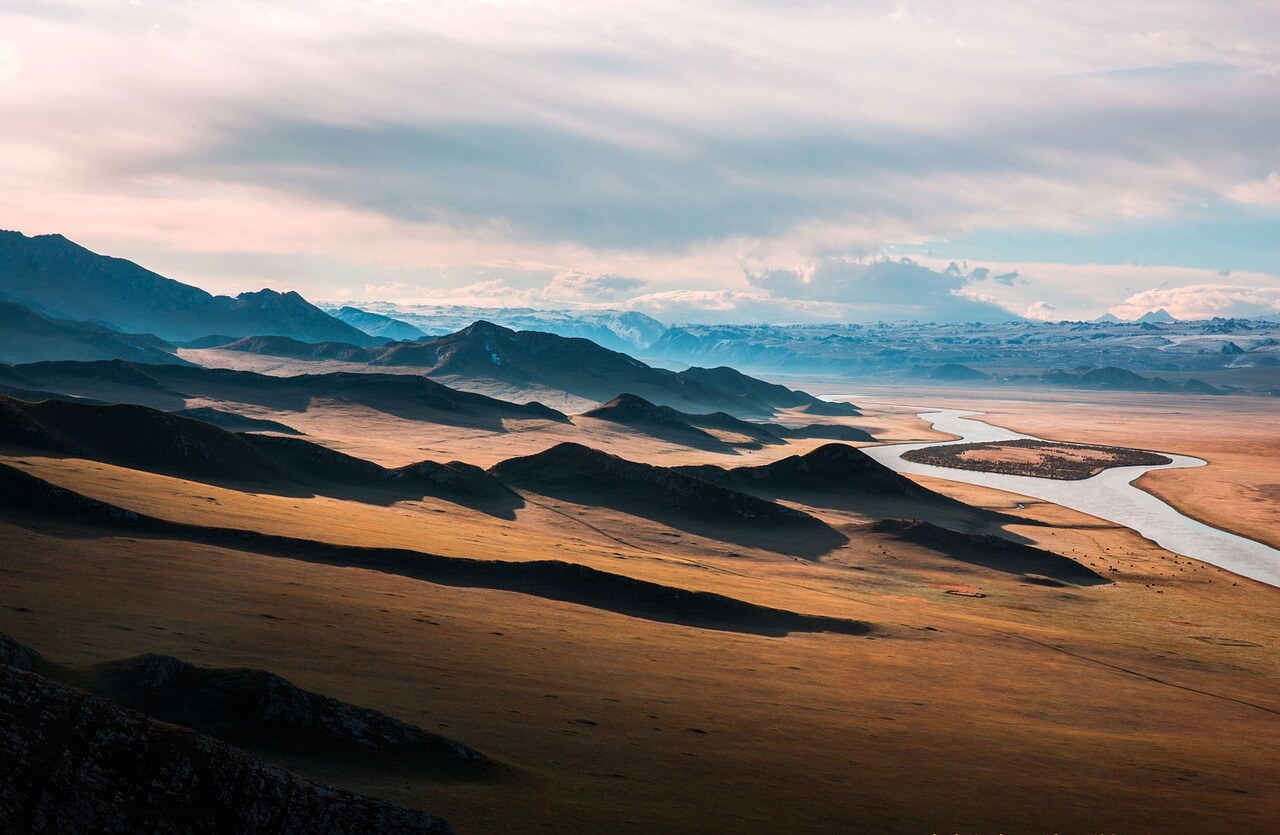
Want even more examples of round-up articles? Here you go:
- 12 new art exhibits to see this summer (Smithsonian)
- 21 ways to see America for cheap (Huffington Post)
- 41 places to go in 2011 (New York Times)
Personal essays
Publishers are experiencing something of a personal essay fatigue , so the market for more might be scarce these days. However, quality trumps all, and a good personal travel essay is just plain good writing in disguise: something that possesses a strong voice while showing insight, growth, and backstory.
Just don’t make it a diary entry. In an interview with The Atlantic , travel writer Paul Theroux said: “The main shortcut is to leave out boring things. People write about getting sick, they write about tummy trouble. They write about waiting. They write three pages about how long it took them to get a visa. I’m not interested in the boring parts. Everyone has tummy trouble. Everyone waits in line. I don’t want to hear about it.”
Here’s a jumping-off point for personal travel essays:
- Taking the Great American Roadtrip (Smithsonian)
Have a burning opinion to share? Sometimes publications end up giving op-eds to staff, but there are always open calls for opinion pieces.
Travel op-eds are much rarer than political opinion pieces, but there’s a pattern to the ones that make the cut: good persuasive writing. If you can come at a topic from a unique angle (and argue your case clearly) then you may be able to publish your opinion.
If you’re in the mood for travel op-ed articles, see:
- The West Coast Is The Best Coast For Food In America (Food & Wine)
- Why Climate Change Is Actually Relevant To Travel (Conde Nast)
Travel Blogging

When typing “travel blog” into Google returns 295 million results, we can guess it’s a fairly competitive market.
Here’s the plus side: bloggers get to write what they want and go where they please. When it comes to blog posts, there are no editors, no gatekeepers. Only you and the “PUBLISH” button.
We won’t go revisit the types of travel writing we covered earlier (such as the roundup format). Instead, we’ll explore some of the other formats bloggers use to tell their travel stories. Since the rules of travel blogging are next to non-existent, our tally below is by no means definitive. And, again, our best advice is to note what your favorite bloggers do on their blogs.
Already running a successful travel blog? You might consider turning that blog into a book !
How-To articles are already fairly popular in magazines, but they’re positively omnipresent in the travel blogging world. Blogs provide a direct communication platform, allowing trust to build up quicker with the readers. As a result, for the search query, “How to travel Europe on a budget,” six out of the top ten results are posts from trusted independent blogs.
A How-To article is the most standard form of advice column a travel blogger can produce. It’s intrinsically useful, promising that it’ll teach something by article’s end. A blogger’s challenge is delivering fully on that promise.
How to read more How-To articles? We got you covered:
- How To Start A Travel Blog (Nomadic Matt)
- How To Travel Solo To A Party Destination (Adventurous Kate)
- How to Visit Penang’s Kek Lok Si Temple (Migrationology)
Itineraries
Itineraries reveal the schedule that the writer took at a given destination, city-by-city or sight-by-sight. They’re meant for the traveler who’s embarking on a similar trip and needs a template. Typically, you’ll find that an itinerary post is an easy place for you to slip in recommendations, anything from the accommodation you used or the restaurants you tried.
You can use itinerary posts to reinforce your blog’s brand. For instance, an itinerary posted on a blog focused around budget travel will probably maximize cost-saving chances.
For more itineraries, see:
- My Trip To Japan (A Complete Japan Itinerary)
- Backpacking Vietnam on a budget: 2-3 Weeks Itinerary + Tips
Longform posts
Longform travel blogging tells a travel story through extended narrative content, as it takes a week’s worth of adventure and shapes it into a story. Longform blog posts about travel often end up being creative nonfiction : a way to present nonfiction — factually accurate prose about real people and events — in a compelling, vivid, dramatic manner.
Photography can add another dimension to the form, as Emmanuel Nataf (our co-founder!) shows on his travel blog . And Reedsy's very own Arielle provides a glimpse into why she prefers longform travel writing on her blog, Steps, a Travel Journal :
My favourite kinds of stories are the ones that give you a real sense of place. That’s why I enjoy longform travel blogging: I get to describe the character of a place through the experiences I encountered there.
If you want to dip your toe into the sea of longform posts, you can also read:
- The Cow Head Taco Philosopher King of Oaxaca (Legal Nomads)
- The Best Worst Museum In The World
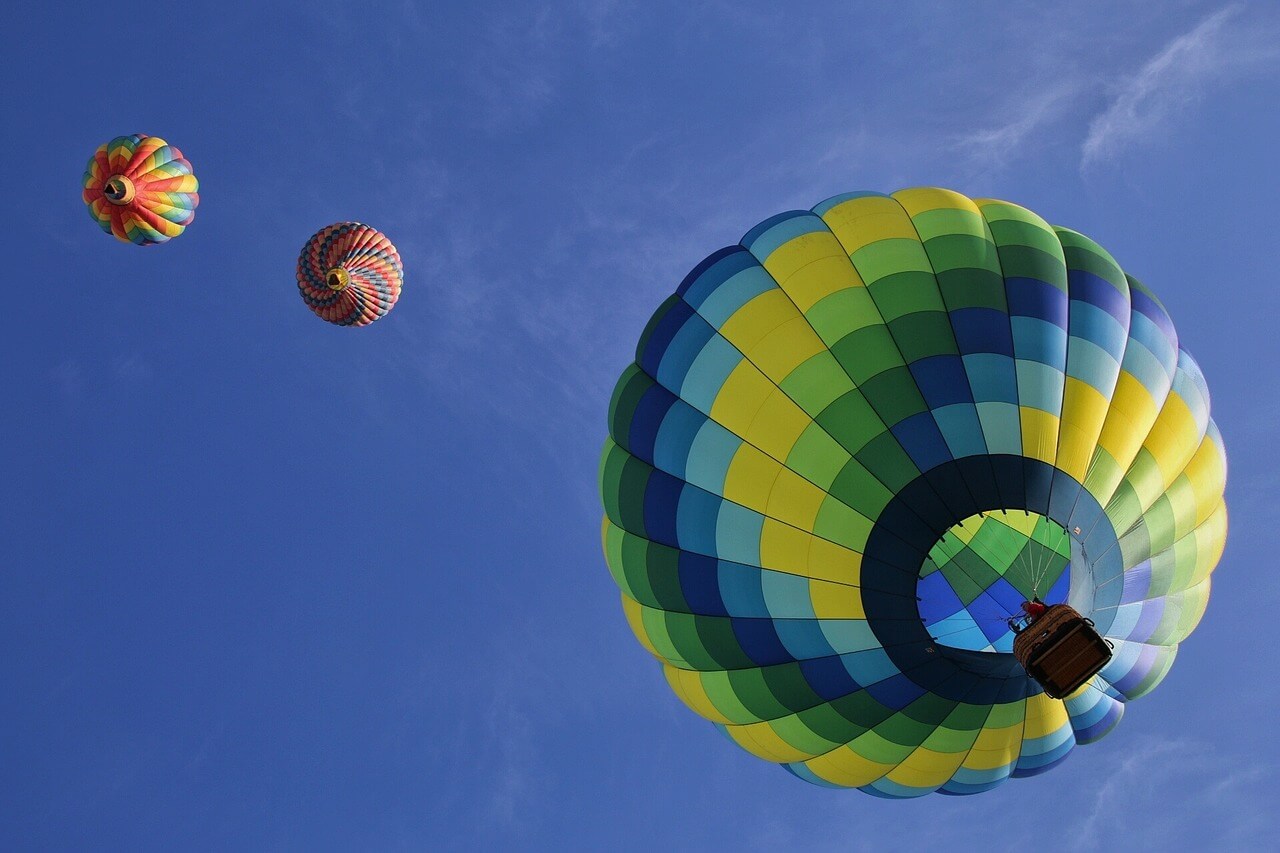
When it comes to writing a book, you can take all the challenges about travel writing from above and magnify it times 2,000. If you’re asking readers to commit to you for more than 100 pages, you’d best make sure that your book is worth their while.
As far as examples go, travel writing’s boomed in the mainstream book market recently. But there’s much more to it than Eat, Pray, Love and its descendants.
Travelogues
In travelogues, authors record their adventures in a way that illustrates or sheds insight upon the place itself. Travelogues possess a storied past, from Lady Mary Wortley Montagu’s Turkish Embassy Letters in 1763 to Mark Twain’s 1867 The Innocents Abroad , which paved the way for the sort of comic travelogues that Bill Bryson’s perfected today.
Up for some travelogues? Check out:
- Notes From A Small Island , by Bill Bryson
- In Patagonia , by Bruce Chatwin
- Travels with Charley In Search of America , by John Steinbeck
Travel memoirs
Nowadays, travel memoirs are practically synonymous with Elizabeth Gilbert’s wildly popular Eat, Pray, Love and Cheryl Strayed’s bestselling Wild , which were both recently adapted into Hollywood blockbusters.
That said, be aware that you’ll need a pretty exceptional personal story for your memoir to compete in today’s market . If you’re still set on writing or self-publishing a travel memoir, it’s tricky to balance personal backstory and travel for 400 pages, so think about taking on a professional for a second pair of eyes.
Did you know? You can find Nicki Richesin , a top Bloomsbury editor who’s edited for Cheryl Strayed, on our marketplace.
In addition to Eat, Pray, Love and Wild , you can read:
- Under the Tuscan Sun , by Frances Mayes
- Coasting , by Jonathan Raban
- Wind, Sand, and Stars , by Antoine de Saint-Exupéry
As Oscar Wilde said, “I never travel without my diary. One should always keep something sensational to read in the train.” But these days, people are replacing diaries with travel guides — the ubiquitous Lonely Planet becoming one of the more common sights on transit.
Travel writing in guidebooks is straightforward, informative, and fact-filled. In addition, there’s a certain amount of responsibility that comes with the job. Lonely Planet alone is read by millions of travelers worldwide.
General Tips and Guidelines

As we mentioned before, the trick to producing great travel writing is ultimately simply writing well . To that extent, you should make sure to follow all the guidelines of good writing — not least, spell-checking your article before submitting or publishing it anywhere. You don’t want an editor or reader to see it while it stilll reads lik edis.
Also, keep in mind the tone, style, and vibe of the publication and platform (and by extension, your audience). A story about a moon-rock could go into a kid's magazine or it could go into Scientific America .
Finally, some category-specific tips:
- If you’re freelance writing, always check submission guidelines. Publications may accept only pitches or they may welcome articles “on spec” (pre-written articles). Some sources only take travel articles that were written within 6 months of the trip.
- If you’re blogging, brand your website (same advice if you’re an author who’s building an author website ).
- If you’re writing a book, get a professional editor! An unedited book is an unwieldy thing, and professional eyes provide direction, continuity, and assonance. ( Layout designers can be important if you’re publishing a travel photography book, in the meanwhile.)
Travel writing isn't a cinch. In fact, it's a long and often hard grind. But by figuring out what type of travel writing you want to try your hand at, you're taking the crucial first step.
Have you tried travel writing before? Want to show us the cool travel blog that you're keeping? We're always in the mood for great travel writing + pretty pictures. Leave us a note in the comments and we'll be sure to check it out!
7 responses
Amanda Turner says:
20/03/2018 – 16:20
Thank you, this was very helpful. Here's one of mine: http://vagabondingwithkids.com/every-mothers-guide-to-piranha-fishing-in-the-amazon/
Travalerie says:
24/05/2018 – 18:42
I landed on this page Googling for one thing and coming up with another. Haha! But what I found instead was helpful as I'm devouring as much as I can on travel writing. A few months ago, I started a new travel business, revamped my website including a new blog, and am in the process of writing, writing, writing. I took 2 trips this year so far and wrote what seemed like a mini-novella. Burning out in the process. I know I can do better. But I had no idea what I was writing could be re-worked to fit a certain category of travel writing -- which is what I found helpful in this post above. Thanks https://www.travalerie.com/blog
Surya Thakur says:
04/03/2019 – 12:39
Very good information. Lucky me I discovered your blog by chance (stumbleupon). I’ve saved as a favorite for later! KuLLuHuLLs
David Bishop says:
08/05/2019 – 12:28
Thanks for this good article. I'm in my third year on the road and recently started my senior solo adventure travel website. I think my site has some pretty good stuff, of course. Take a look and tell me what you think. www.davidhunterbishop.com
Iris C. Permuy says:
23/05/2019 – 18:03
Thank you very much for all of these useful pieces of advice. I will make sure to implement them all on my travel blog, which is a combination of travel and gastronomy and uses the memoir and itinerary types, apart from recipes. Come check it out if you feel like it! I am more than open, eager for some professional feedback :)
Serissa says:
26/10/2019 – 14:53
This post is the perfect diving board for aspiring travel writers. I plan to link to this page from my travel blog if that is alright! ?? The link on my website will appear as "[title of this post] by Reedsy Blog". I assume this is alright, but if not, please email me directly to let me know! Thanks so much!
↪️ Martin Cavannagh replied:
29/10/2019 – 10:11
We'd be absolutely delighted if you shared this article on your blog :)
Comments are currently closed.
Continue reading
Recommended posts from the Reedsy Blog

The Redemption Arc: Definition, Examples, and Writing Tips
Learn what it takes to redeem a character with these four tips.

How Many Sentences Are in a Paragraph?
From fiction to nonfiction works, the length of a paragraph varies depending on its purpose. Here's everything you need to know.

Narrative Structure: Definition, Examples, and Writing Tips
What's the difference between story structure and narrative structure? And how do you choose the right narrative structure for you novel?

What is the Proust Questionnaire? 22 Questions to Write Better Characters
Inspired by Marcel Proust, check out the questionnaire that will help your characters remember things past.

What is Pathos? Definition and Examples in Literature
Pathos is a literary device that uses language to evoke an emotional response, typically to connect readers with the characters in a story.

How to Start a Children’s Book: Coming Up with Your Big Idea
If you've ever dreamed of writing a children's book but aren't sure where to start, check out this post to learn more about how you can create the perfect story for kids.
Join a community of over 1 million authors
Reedsy is more than just a blog. Become a member today to discover how we can help you publish a beautiful book.

We made a writing app for you
Yes, you! Write. Format. Export for ebook and print. 100% free, always.

1 million authors trust the professionals on Reedsy. Come meet them.
Enter your email or get started with a social account:
6 examples of gorgeous travel writing
Inspiration to help your next travel blog, guidebook, or article stand out from the crowd.

We live on a wondrous, ever-changing planet— from alpine lakes and cloud forests to ancient cobblestoned cities.
The best travel writers can transport readers to these far-flung destinations, and to introduce them to new cultures and experiences. When done well, travel writing can be an insightful, thought-provoking and even life-changing genre of writing.
And with interactive content platforms, it’s possible for travel writers to create truly immersive reading experiences online. In this guide, we introduce six ideas — and examples of travel writing — to help you create beautiful, interactive travel stories.
Whether you're a beginner travel writer, a publisher, destination marketer, or freelance travel blogger, we've got plenty of inspiration to get you started.
What do the BBC, Tripadvisor, and Penguin have in common? They craft stunning, interactive web content with Shorthand. And so can you! Publish your first story for free — no code or web design skills required. Sign up now.
The features of great travel writing

The best travel writing is unique, but there are still some general guidelines you’ll want to follow to make your travel writing stand out from the pack. Here are some travel writing tips to help you compete with the best examples of the genre.
- Have a point of view. Great travel writers — from the travel books of Bill Bryson and John Steinbeck to the documentaries of Paul Theroux — all have very specific points of view that are difficult to copy. Find your voice, and your travel articles will truly sing.
- Take great photos. The best travel writing is visually immersive, using high resolution images and video to engage the reader’s senses. Even if you’re not creating a photo essay , modern travel writing relies of great visual assets.
- Use multimedia content where you can. If you can, create audio and video assets, too, and consider building out your story with a digital storytelling platform to use interactive features. Embed podcasts and clips to keep the reader engaged.
- Learn from the best. Keep track of longform feature stories in the New York Times and the Washington Post, and steal their techniques. (Good travel writers borrow, great travel writers steal, to butcher TS Eliot.)
- Create a beautiful web presence. We love the print Lonely Planet travel guides, but these days you need to produce stunningly engaging content on the web. Standards are high, but you’d be amazed what you can do with modern interactive content platforms.
- Provide a sense of adventure — even if you’re not strictly doing ‘adventure travel’. Whether you’re writing a first person travel memoir or writing about your backpacker’s trip through the Amazon, you want to keep your reader engaged with your travel experiences.
- Make it educational. Teach the reader something new about the world they’re exploring.
- Edit your work. The best travel writers kill their darlings and pay attention to details — hello, commas — knowing that this is how the best work is created.
Want to improve the efficiency of your writing process? Check out our list of the best writing tools .

Inspire readers and move them to action by exploring a location's unique history and culture. By focusing on just one place, your readers get the chance to experience it deeply through your words and imagery.
Intrepid Travel's Shorthand story 'Welcome to Olkola Country' is simple, yet effective. The highlight of the story is its elegant writing — a blend of reporting and personal narrative that explores the history, culture, and ecology of an ancestral land of the Olkola people in Australia. The story is elevated with thoughtful photos and videos, and ends with a call to action for the newly-inspired reader.
Looking for more inspiration? Check out our roundup of ten stunning photo essay examples .
The right images can make a story feel polished and inspired.
2 . Time travel

Taking readers back through historical moments is a great way to achieve more depth in your stories.
In the story The Museum of Atari, Mario and Electronic Childhood Dreams , Channel News Asia uses Shorthand to create a stunning visual story about a little-known museum of retro video games in Singapore. The highlight of the story is an interactive scrollytelling timeline about the history of video games, which is created using the Shorthand Reveal feature and animates a pixel character as the reader scrolls.
Our Reveal section allows animations like this to be controlled by the reader's scrolling.
3 . Immerse your reader

When words and photos simply aren't enough to convey the complexity of a travel story, add another layer of reader engagement using various forms of media.
The Sydney Opera House story A Guide to Dance Rites uses multimedia to bring indigenous culture to life. With elements like animation, slideshows, and embedded audio clips, readers can feel fully immersed in one of Australia's most traditional dance competitions.
Embed your own code to add further customisation to your story.
With Shorthand, remember that you always have the option to add custom HTML to add further customisations to your stories. See a list of our recommended third party tools in this support document .
4 . Just the highlights

Not every trip allows for the luxury of time. In order to get the point across, sometimes a quick and to-the-point listicle is all that's necessary to deliver a clear and time-efficient message.
Mansion Global's story 6 Cities, 6 Continents takes a quick jaunt around the world to some of the best cities to buy a dream vacation home. The destinations are all tied together by an interactive map that tracks a route between the cities — a creative use of the Shorthand Reveal section .
Interactive maps can help connect different locations in your story.
5 . Keep it practical

Travel stories don't always need to inspire wanderlust or transport readers to far-flung destinations. Some of the most effective and important travel stories simply provide practical advice — whether that's how to exchange currency, say "thank you" in a foreign language, or avoid danger.
Travel Weekly's story Traveling While Female explores how female travellers can stay safe, and uses data to stress the importance of improving women's safety abroad. By displaying the data as interactive graphics, Travel Weekly draws extra emphasis to key statistics.
Make your data memorable by giving it special emphasis.
6. Zoom out

When you've written a couple of beautiful travel stories, what's next?
Tie together your creative vision by consolidating your stories into a single landing page. You can use Shorthand to create a home for all of your stories, whether that's by using our Collection section or by including links in other section types.
For example, Luxury Travel nests all of their feature content within a Shorthand story. The page takes advantage of our media-rich sections to create a scrolling archive of their beautiful travel stories.
Consolidate your features in a single Shorthand story.
There are myriad ways to turn a Shorthand story into a landing page. Here's another example from Perth Now, which takes a simple, colourful approach.
There are many ways to customise a Shorthand story to serve as a landing page.
Creating a unique online travel story can seem like a daunting task, but Shorthand's many easy-to-use features exist to help make your stories exceptional. There are thousands of destinations waiting to be written about, and we can't wait to see where your stories take us next.
Publish your first story free with Shorthand
Craft sumptuous content at speed. No code required.

The Road Back Home 2024 • Field Recording
Under a Winter’s Moon 2022 • Live Seasonal Recording
Live At The Royal Albert Hall 2019 • Live Recording
Lost Souls 2018 • Studio Album
The Journey So Far – The Best Of 2014 • Compilation / Live
Troubadours On The Rhine 2011 • Live Recording
The Wind That Shakes The Barley 2010 • Studio Album
A Mediterranean Odyssey 2009 • Live Recording
A Midwinter Night’s Dream 2008 • Seasonal Recording
An Ancient Muse 2006 • Studio Album
Live in Paris And Toronto 1999 • Live Recording
The Book Of Secrets 1997 • Studio Album
The Mask And Mirror 1994 • Studio Album
The Visit 1991 • Studio Album
Parallel Dreams 1989 • Studio Album
To Drive The Cold Winter Away 1987 • Seasonal Recording
Elemental 1985 • Studio Album
No Journey’s End DVD
Nights From The Alhambra Live Recording / DVD
A Moveable Musical Feast DVD
How to Write a Travel Book

Loreena’s introduction
By far the best companions I’ve had when travelling have been books and the enchanting, beguiling, confiding voices of the writers who created them. Not all these texts that I carry, dog-eared and well-loved and crammed into suitcases, have been books of travel writing, of course, but it is true that many of my most enjoyable journeys both actual and imaginative have been taken in the company of the great travel writers. One of my very favourite writers, the Scotsman William Dalrymple, provided great inspiration during the creation of my album The Book Of Secrets via his book From The Holy Mountain . Since then, I’ve eagerly delved into his many other excellent works and followed his engaging, erudite and compelling articles for British newspapers and magazines around the world.
As much of what I attempt to do with my recordings is a kind of musical travel writing – evoking history, places, atmospheres, people and cultures via lyrics and music – I have always wondered how the great travel writers approached their work. I am happy to offer, via this website, an exclusive article from the pen of Mr Dalrymple himself, who generously offers his insights and advice on the craft to would-be travel writers as well as to the rest of us who are content to follow those intrepid literary travellers in our imaginations. I feel certain you will enjoy his account of the travel writer’s art as much as I have, and hope that you will investigate his work further via his website and the shelves of your local library or bookshop. – LM
How to Write a Travel Book by William Dalrymple
Download as PDF In the summer of 1973, a minor American novelist named Paul Theroux asked his publishers if they would be interested in a book about trains. Trains – a travel book: it was a novel idea (at least in 1973) and the publishers liked it. In fact, they liked it so much they gave Theroux an advance – his first – of £250. The Great Railway Bazaar , an account of a journey from London Victoria to Tokyo Central, was published in 1975. None of Theroux’s novels had ever sold in any quantity. But The Great Railway Bazaar swiftly moved over 1.5 million copies in 20 languages. The book did more than revive Theroux’s flagging literary career: it kick-started what was to be the most important publishing phenomenon of the 1980s. The success of The Great Railway Bazaar inspired Bruce Chatwin to give up his job on The Sunday Times Magazine and to go off to South America. The result – In Patagonia – was published in 1977, the same year Patrick Leigh Fermor produced his great masterpiece, A Time of Gifts . By the early 1980s, Eland Books were busy reprinting the great nineteenth-century travellers and Thomas Cook had announced its Travel Writing Award. Soon the travel sections in bookshops were expanding from a single shelf at the rear of the shop – somewhere near Photography and Do-it-Yourself – to a whole wall at the shop-front, flanking Fiction and Biography. The final breakthrough came in 1984 with the publication of the famous Travel Writing issue of Granta : “Travel writing is undergoing a revival,” wrote Bill Buford, Granta ‘s editor, “evident not only in the busy reprinting of the travel classics, but in the staggering number of new travel writers emerging. Not since the 1930s has travel writing been so popular or so important… ” Travel writing was suddenly where the action was, and it remained so for nearly ten years. Among writers the form became popular, for it re-emerged at a time of widespread disenchantment with the novel, and seemed to present a serious alternative to fiction. A writer could still use the techniques of the novel – develop characters, select and tailor experience into a series of scenes and set pieces, arrange the action so as to give the narrative shape and momentum – yet what was being written about was all true; moreover, unlike most literary fiction, it sold. For the travel writers it was a dream period. At the height of the boom, figures like Theroux or Newby were able to simply jump on a train; on their return, after a quick reworking of their diaries, they could reasonably expect to have a Review Front serialisation and a crop of rave reviews; they might even have a bestseller. No more. A decade later, after several hundred sub-Therouxs have penned rambling accounts of every conceivable rail, road or river journey between Kamchatka and Patagonia, the climate has changed from enthusiasm to one of undisguised boredom. Theroux was himself one of the first to express his dislike of the publishing Leviathan he had helped create: “Fiction is the only thing that interests me now,” he told an interviewer. “The travel book as autobiography, as the new form of the novel – it’s all bullshit. When people say that now I just laugh.” Travel writers have found to their alarm that Theroux’s feelings have increasingly been shared by the critics. While in the 1980s even fairly slapdash travelogues tended to get a warm reception, reviewers have now begun to pillory even the most engaging travelogues. The reaction has yet to filter down from the book pages to the bookshops: the likes of Bill Bryson, Tony Hanks and Dave Gorman continue to dominate the bestseller lists. But what is certain is that travel writing has lost some of its novelty and its chic, that in the fad-conscious eyes of literary London it has begun slipping down the slope from the literary high ground it dominated for a decade. This backlash is not the end of the line, and it isn’t as if this is the first time that travel writing has gone out-of-fashion. Travel writing will emerge from its current gloom, just as it did in the 1930s, but in the mean time the travel writing recession seems to have resulted in a weeding out, a concentrating of publishers’ minds. For now that everyone travels, writing travel books is a much more difficult business thatnit used to be, and while it’s still fairly easy to write a travel book, to write a good travel book now takes real ingenuity. The market in travel books is currently fairly saturated and advising potential literati how to write travelogues is slightly like advising the people of Consett how to become steel workers. However fluent or witty your prose, it is simply no longer enough just to jump on a train, and writers have had to dress up their journeys in some pretty fancy packaging if they want to be taken seriously. Certainly your proposal must be that much more spectacular than it used to have to be: your idea should either be unusually difficult, unusually clever or unusually original. For the travel book is potentially a vessel into which a wonderfully varied cocktail of ingredients can be poured: politics, archaeology, history, philosophy, art, magic: whatever. You can cross fertilise the genre with other literary forms: biography, or anthropological writing; or, more perhaps interesting still, following in Bruce Chatwin’s footsteps and muddying the boundaries of fiction and non-fiction by crossing the travel book with some of the wilder forms of the novel. The result of this tendency has been a crop of one or two rather wonderful books by younger writers: Katie Hickman’s travels with a Mexican circus- wonderful idea – Sam Weinberg’s quest for the mercenary Bob Denard or Jeremy Seal searching Turkey for the anthropology of the fez. Perhaps the best hybrid travel book is John Berendt’s immensely successful Midnight in the Garden of Good and Evil – the book is half travel writing and half murder mystery, but wholly enjoyable. The same is true of Norman Lewis war diary, Naples ‘44 – a cross between travel writing and military memoir. To make an impact in a crowded market, these travel writers have been forced to go in deeper than their predecessors, learning the languages, seriously studying their subjects, extending their stays for longer periods: when doing the research for his last book In An Antique Land , the Indian writer Amitav Ghosh, for example, spent two years in his village, learning not only fluent modern Egyptian Arabic, but going so far as to become one of a handful of living scholars able to read Judeo-Arabic, a colloquial dialect of medieval Arabic written in the Hebrew script – and then on top of all that, spent about three years producing a superbly turned piece of prose
Anyway: enough gloom. Here are some hints on how you can beat the recession and get into print:
1. The concept:
These days you need some pretty fancy packaging: it’s simply not enough any more to go off and write a book about travelling through France or Russia or Bolivia, and it’s certainly not the time to start putting in proposals about taking a dustbin cart to Borneo, a tricycle to New Orleans or a pogo stick to the Antarctic: the killing-off of the Gimmicks School of Travel Writing is one of the more happy results of the recession – although Tony Hanks’ hilarious parody of that sort of book, Round Ireland with a Fridge, is of course one of the bestselling travel books of the last few years.
To write about a country in a very general and unfocussed way, you have to be very good: Thubron can do it, but you have to be very good indeed to write a getting-into- the-soul-of-a-country travel book. An easier, less ambitious – and more commercial- option is the Relocation Book – about setting off from London or New York and building a new life for yourself in Tuscany or Spain or Provence. Peter Mayle’s Year in Provence kicked off a fashion for travel books of this sort and was followed by ex-Genesis drummer Chris Stewart’s Andalucian memoir, Driving Over Lemons ( and its sequel A Parrot in the Pepper Tree ), Carol Drinkwater’s The Olive Farm and Frances Mayes’ Under the Tuscan Sun, all of which got little critical attention but nevertheless turned into major bestsellers.
There is also a more serious strand of travel writing that aims to delve into the soul of a city: my own book on Delhi, City of Djinns was written in the tradition of studies of remarkable cities such as Jan Morris’s classic, Venice, and Geoffrey Moorhouse’s wonderfully apocalyptic Calcutta.
If falling in love with a small fragment of the globe is as good a starting point for a travel book as any, then other passions can also provide a good take-off point. Indeed, I think it’s fair to say that to be a really interesting travel writer you’ve got to have some small obsession: Ryzard Capuschinzki loves revolutions and watching dictators fall; Redmond O’Hanlon likes birds, beasts and exotic diseases; Bruce Chatwin was on the lookout for ideas and for nomads. I don’t think it really matters what your interest is: stamp collecting, trainspotting, whatever: as long as it’s genuine and you can convey your enthusiasm for it, you’ve probably got the seed of a travel book there.
2. The research:
Increasingly important if your book is to have any sort of authority – although it obviously depends what sort of book you’re writing, and in a comic travelogue your ignorance of the country you are travelling can provide the occasion for much humour). For myself: City of Djinns was the product of a couple of years in libraries and archives; From the Holy Mountain eighteen months.
A card index is a very useful tool for keeping track of your research. For my last two travel books I kept two card indexes: one with anecdotes and references listed under places and one listed under themes. So for From the Holy Mountain one index contained a list of places I expected to pass through on and around my projected route (Istanbul, Antioch, Aleppo, Damascus etc) and the other a list of potential themes, which grew as I read (magic, monks, ghost stories, miracle stories etc). So when I came to write about a place or a theme, I had to hand a long list of the best stories I knew associated with each place.
One other thing: there is no better way to learn how to write travel books than simply to read other travel books. My own personal shortlist of the great travel books would include:
- Robert Byron: The Road to Oxiana
- Colin Thubron: Behind the Wall
- Redmond O’Hanlon: Into the Heart of Borneo
- Jan Morris: Venice
- John Berendt: Midnight in the Garden of Good and Evil
- Bruce Chatwin: In Patagonia
- Patrick Leigh Fermor: A Time of Gifts
- Normas Lewis: Naples ‘44
- Bruce Chatwin: The Songlines
- Jason Elliot : An Unexpected Light
- Philip Marsden: The Bronski House
- Amitav Ghosh: In an Antique Land
- Eric Newby: A Short Walk in the Hindu Kush
3. The journey:
Everyone goes about writing a travel book in a different way. I can only speak for myself when I talk of technique: for me the biggest mistake was to try and keep a logbook when you are exhausted at the end of the day. I think it is absolutely vital to have a notebook in your hands, always, and to scribble constantly: not so much full sentences, so much as lists of significant detail: the colour of a hillside, the shape of a tulip, the way a particular tree haunts a skyline. Creating fine prose comes later- back at home in front of the computer. On the road- even in a rickety bus or a bumpy jeep- the key is to get the raw material down before it is lost to memory.
Getting it down is especially important when writing dialogue- the key to any half decent travel book: you simply can’t remember the exact words even half an hour later, never mind at the end of an exhausting day. The travel writers I really admire all keep exceptionally detailed notes: Theroux, Thubron, Chatwin. So the first golden rule is: get it down. If you can’t write down dialogue immediately, or openly, find some stratagem to get around the problem: I know one travel writer who pretends to have a bad stomach and therefore has an excuse to keep disappearing into the lavatory in order to get down dialogue in customs posts and police stations where openly taking notes would be impossible.
Dialogue is the heart and soul of modern travel writing, for if 19 th century travel writing was about principally about place – about filling in the blanks of the map and describing remote places that few had seen – 21 st century travel writing is all about people: exploring the extraordinary diversity that still exists in the world beneath the veneer of globalisation. As Jonathan Raban once remarked: “Old travellers grumpily complain that travel is now dead and that the world is a suburb. They are quite wrong. Lulled by familiar resemblances between all the unimportant things, they meet the brute differences in everything of importance.”
The second golden rule is to try and enjoy yourself. If you lose interest in your own journey, the reader can tell it immediately and soon loses interest himself. I think this is what went wrong in Thubron’s Lost Heart of Asia . Travel writing is quite a lot about escapism, and no one really wants to read someone having a really dull and unpleasant time for three hundred pages (which isn’t to say that the reader doesn’t quite enjoy it when someone who has just been sitting on a paradise island surrounded by beautiful Gaugin girls falls down and breaks his leg.)
The third golden rule is to be open to the unexpected. Often one can set oneself a task – to go and search out some aspect of a particular place — and not notice good material if it’s not what one is looking for at that moment. An example: in 1990 I went up to Simla to interview two old “stayers on” who had lived in Delhi in the 1930s and who would, I hoped, be able to recreate that lost world of the Raj for me. In the event, however, I arrived ten years too late: both the old ladies had gone badly senile and now imagined that they were being persecuted by Jewish prostitutes who popped up from beneath the floorboards and put dope in their food. I failed to get anything at all useable about 1930s Delhi, and left the old ladies disappointed and dejected that I had wasted an afternoon. It was only later when I told my wife Olivia about the meeting that she pointed out that the bizarre afternoon would in fact make an excellent sequence in itself. It duly became one of the very best – and much the strangest – sections in City of Djinns. If the art of travel writing is at least partly all about spotting the significant moment and discarding the irrelevant, then you have to be constantly alert, and it’s often at the most unexpected moment that the crucial, telling incident takes place.
In the same way, you often come across the best stories when you last expect them: when you have ticked off your interviews and visits for the day and settle down to have a drink in a bar or have dinner. So often it’s exactly when you close your notebook and settle down to relax that you stumble across the most intriguing characters and funniest anecdotes.
A final rule: when you are taking notes, make sure you try to capture all the senses. When you write about place, don’t just give a physical description of somewhere: try to capture significant sounds and smells and the physical feel of a place. Also how your body responds to a particular location: in a hot climate, the roll of perspiration down the forehead, the grit of sand in your shoes, the grind of cicadas or the smell of frying chillies can recreate a sense of place much more immediately than a long physical description.
The same is true of building up a character: the way someone smells, or the timbre of their voice can help visualise a person much better than a lengthy physical description. Most important of all is dialogue: a well-chosen snatch of conversation can bring a person to life in a single sentence.
Here are some of my own personal favourites – examples of exceptionally good evocations of place or people.
For a short and perfect evocation of a city, look at Bruce Chatwin’s description of Buenos Aires at the beginning of In Patagonia (p 7). For a totally different approach – as wonderfully purple as Chatwin is sparse – see Patrick Leigh Fermor’s description of walking through a German winter in A Time of Gifts (p117-8). Also by Leigh Fermor in the same book, see his spectacular description of Melk cathedral (p167-9) – one of the most amazing pieces of architectural description I know of.
For bringing a character to life in a single page, take a look at John Berendt’s description of the Lady Chablis in Midnight in the Garden of Good and Evil, p96-8, or two passages by Bruce Chatwin in In Patagonia: the hippy miner (p54) and the Scottish farmer (p66-7). Then there is Eric Newby’s famous description of the explorer Wilfred Thesiger on p246-8 of A Short Walk in the Hindu Kush.
4. The writing:
Everyone has their own rhythm. When I am steaming away actually writing a book – a process that takes me anything between nine months and two years – I tend to be unusually disciplined: getting up early, finishing email and chores by 8.30am and at my desk writing by no later than 9.30 am. I break for lunch, go for a walk and then come back and go through a print-out of the morning’s work at teatime, and continue correcting and planning the next day until seven-ish. My wife Olivia is incredibly good at making suggestions and telling me when what I have written is boring or could be improved. If your partner is no good at this, find a friend who is. Going over and over and over a piece of prose until it is as perfect as you can make it is as important as anything else in the formation of a book.
5. The selling :
Find an agent for this: never try to do it for yourself. If you know any writers, however distantly, ask them for an introduction to their agent. Otherwise look in the Writer’s Yearbook. Send a well-written covering letter plus a four or five page synopsis of the plot with a little biographical paragraph about yourself, asking whether the agent would like to look at the finished manuscript. During the 1980s it was possible to get book contracts and advance payments before you had actually written your travel book. These days, that is less and less likely to happen, and the writing of a book is, by its nature, a big financial gamble. Only go ahead with the project if you are really passionate about it. But if you have something to say, don’t despair and don’t let early rebuffs from agents or publishers put you off: if you can make it work, travel writing is one of the most enjoyable and stimulating lives imaginable- especially when you are young and single and able to leave home for great chunks of the year. Go for it!
Spend a day on a bus or a train with a notebook and practice getting down as much detail, and using as many of your senses as possible. Get used to making conversation with your fellow travellers, finding out their life stories and writing down the conversation as they speak. Fight your own shyness: it’s only by engaging with strangers that you will find out their stories: the heart of modern travel writing.
© 2005 William Dalrymple www.williamdalrymple.com
Privacy Overview
Examples of Great Travelogue Writing to Inspire Your Next Adventure

“Traveling – it leaves you speechless, then turns you into a storyteller.” – Ibn Battuta.
Ah, the joy and thrill of travel! Discovering new places, meeting strangers, and immersing yourself in unfamiliar cultures. But what’s the point of all this if you can’t capture the essence of your expedition in words? That’s where travelogue writing comes in.
Have you ever read a post that made you feel like you are experiencing the adventure alongside the writer? Well, that’s the power of a well-written travelogue.
It can transport your readers to far-off lands and make them feel right there with you. Add vivid descriptions, engaging anecdotes, and personal reflections, and voila! - You’ve got yourself some entertaining travel tales to share.
So, are you ready to unlock your inner travelogue writer?
Craft captivating tales that will leave your readers wishing for more. Let’s get started and master the art of travel writing!
Discover the Art of Travelogue Writing
From ancient Greece to modern-day blogs, travelogue writing has existed for centuries. It is a form of creative non-fiction that combines memories and factual data. But it’s not just about facts and statistics - a journey of self-expression, storytelling, and adventure.
Remember - it is your travel tale, not a guidebook!
Travelogue writing captures a location’s essence in conveying its beauty and complexity. The key is to immerse yourself in the culture and environment of the places you visit.
Tips for Crafting Engaging Travel Narratives
Once you’ve gathered your thoughts and experiences, it’s time to craft them into compelling narratives. Here are a few tips with examples to help you get started:
Start With a Strong Hook
A vivid description, intriguing anecdote, or thought-provoking question can do the trick. For instance, the following example firmly sets the scene for the travelogue.
“Ever wondered what it’s like to explore Tokyo’s bustling streets? To taste fresh sushi, see neon lights, and immerse yourself in tradition and innovation? That’s what I did on my recent trip to Japan.”
Create a Sense of Place
Use descriptive language to create a vivid image for your readers. The following passage skillfully portrays the same.
“The narrow streets of Marrakech were alive with color and sound. The scent of spices and grilled meats filled the air, and vibrant textiles hung from every stall. As I made my way through the bustling souk, I couldn’t help but feel swept up in the city’s energy.”
Show, Don’t Tell
Suppose you visited a beach and want to write a travelogue about it. Don’t write, “The beach was beautiful.” Instead, convey as shown in the given example.
“During sunset, the sun casts a warm glow over the white sand. The sound of waves filled the air as I dug my toes into the sand and breathed in the sea breeze.”
Now you know the difference. Use dialogue and sensory details to immerse your readers in your destination.
Include Personal Reflections
Share your thoughts and feelings. Connect your experiences to broader themes and ideas. For example,
“Standing atop the fort’s ancient ruins, I was amazed by the stunning views and intricate stonework. But as I gazed over, I reflected on the fragility of human achievement”.
Be Vulnerable
“Doubt crept in as I stood at the peak’s base. Could I make it to the top? But I pushed on and conquered my fear. The sight from the top was nothing short of spectacular”.
In the passage, the writer shares their fears and triumphs in a concise and relatable way.
Use Dialogue
Check out the following example. Here the writer uses dialogue to bring the woman to life and let her speak for herself. It adds depth and personality to your travelogue.
“An old lady chuckled as I haggled with a vendor over a silk scarf in Istanbul. She said, ‘You drive a hard bargain, but everything’s negotiable.’ We chatted about her travel stories as a young trader. ‘Those were the days,’ she sighed. ‘Now, I leave the traveling to the young ones like you.’”
Inspiring Travel Journal Entries to Ignite Your Wanderlust
Reading inspiring travel journals and memoirs is perfect for igniting your wanderlust. Here are a few examples to inspire your travelogue writing.
“Eat, Pray, Love” by Elizabeth Gilbert: A memoir of the author’s journey through Italy, India, and Indonesia in search of balance and purpose. Vivid descriptions and inspiring encounters.
“A Year in Provence” by Peter Mayle: A memoir of the author’s first year in a French village. Witty observations and charming anecdotes transport you to the countryside.
“On The Road” by Jack Kerouac: A classic novel of freedom and self-discovery, chronicling the adventures of two friends on a cross-country road trip.
“In A Sunburned Country” by Bill Bryson: A witty and informative travelogue about the author’s adventures in the land down under.
In ‘The Great Railway Bazaar,’ Paul Theroux invites us on a captivating train journey from London to Tokyo. Along the way, he explores the rich cultures and stunning landscapes.
Final Thoughts
Travelogue writing is a beautiful way to connect with your destinations on a deeper level and encourage others.
- Take inspiration and learn from given epic travelogue writing examples.
- Use your own words – dont copy from examples or websites.
- Inject your feelings and make your stories conversational.
Unleash the beauty of your travel experiences through vivid descriptions and captivating storytelling. Make Text Mercato your partner in this expedition and become a master of the travelogues.
1. What travelogue writers can I look to for inspiration?
There are several great writers you can look for motivation. Here are some personal favourites:
- Bill Bryson is a prolific travel writer with excellent humour and wit. His book, “A Walk in the Woods,” is a perfect engaging travelogue.
- Paul Theroux is known for his deep cultural and historical insights.
- Pico Iyer is known for introspective cultural pieces. For instance, his contemplative travelogue - “The Art of Stillness.”
- Jan Morris writes beautifully descriptive travelogues with her lyrical and evocative style.
2. What are some common themes in engaging travelogue writing?
- Cultural exploration: Write engaging travelogues by exploring the unique cultures of a place.
- Adventure: Discover and write about exotic locations or thrilling activities.
- Food and drink: Review local cuisine, which can be a cornerstone of local culture.
- Personal growth: Focus on self-discovery as you travel to new destinations.
3. How can I apply the techniques of great travelogue writing to my work?
- Have a keen eye for detail and a strong sense of narrative.
- Take the time to observe the people, architecture, and landscapes around you.
- Tell a compelling story and evoke emotions in your readers.
- Use persuasive language to paint pictures and challenge conventional thinking.
- Use humor - add some fun to your writing to engage the reader.
Give your readers a sense of closure .
Tags : Marketing , SEO , Digital Marketing ,
Recent Blog
Newsletters, let’s hear from you on how we can positively contribute to your goals.

Quality content is the key to add value to the success of your business, connect with your audience, and keep them coming back for more. TextMercato is designed to power your digital content needs to the next level.
Content Type
- Website Blogs
- Website Content
- SEO Articles
- Copywriting
- Whitepapers
- Social Media
- Thought Leadership
- Product Descriptions
- Buying & Selling Guide
- Market Reports
- Text Content
- Transcriptions
- Translations
- Real Estate
- Hospitality
© 2023 Text Mercato Solutions Pvt Ltd. All Rights Reserved. Cookie policy | Privacy policy | Terms of use | Contact us

- Editorial Services
- How It Works
- Literary Agent Alert
Tips for Writing a Travel Memoir
Some of the world’s best literature exists in the form of travel memoirs. Bill Bryson’s A Walk in the Woods , Julia Child’s My Life in France , Jamie Zeppa’s Beyond the Sky and the Earth , and John Higham’s 360 Degrees Longitude are all examples of critically acclaimed and universally loved travel memoirs. What makes each of these memoirs so aspirational? Each contains a clever mix of vulnerability, connection, and exoticism.
To create a compelling travel memoir, you must be a great storyteller, first and foremost— and we can help with that. What follows is a list of tips to help you engage your reader with a spellbinding travel story.
Let’s get started.
Here’s a list of the 15 most riveting travel memoirs. Subscribe to receive this extra resource.
Download your bonus content:
Travel Writing Isn’t The Same As a Travel Memoir
Let’s draw an important distinction right away: A travel memoir is not the same as writing a guide book or a generic book on how to travel.
While the latter two may provide the travel-minded tourist hopeful with generic advice on what to see and do, the travel memoir is focused on the writer’s experience and takeaway. A travel memoir may appeal to the reader with wanderlust, but a love of and a desire to travel is not a requirement. The only true requirement for a travel memoir is a good story.
On the other hand, a reader isn’t likely to curl up with a non-narrative guide book.
Blogging, guide books, tutorials, and other forms of travel writing certainly have their place, but they aren’t the same as a memoir. A travel memoir isn’t just a list of experiences in a unique location. It’s a written documentation of the author’s awakening or evolution.
So, unless you’re being sponsored by the visitor’s bureau to write a marketing pamphlet on the destination, your travel memoir should be intimate, honest, and focused on the emotional takeaway.
Give Yourself Some Time
You can’t write a travel memoir while you’re actually on the journey. At best, you’re writing field notes or a travel journal. However, a memoir must have a deeper meaning that’s only evident after you’ve come to the end of your journey.
Before writing your memoir, you must take time to reflect on your travels and to contemplate your story’s overarching theme.
This past summer, I went on a month long adventure to the American West. Although I’d love to write about it one day, I’m still parsing through the experience and figuring out what I’ve learned. The best stories emerge after they’ve had an opportunity to breathe and you’ve gained much needed self-awareness.
To write with self-awareness, let it settle. Realize how the experience has changed you, and then write from that informed perspective.
You may not have it all figured out. Like me, you may be the type of writer who understands their thoughts while writing, but it’s still important for subconscious processing to give yourself space after an event and before writing.
Define Your Voice
When crafting a memoir of any type, you must define your voice.
Your voice is a combination of the following:
- Your unique perspective
- The type of language and cadence you use when writing your story
- The way you choose to tell the story (i.e. humorous, relatable)
Many travel memoirists choose a voice that’s either friendly, self-deprecating, or conversational, however remember that you’re not bound to this type of voice. You can be aloof, formal, or matter-of-fact. Your voice will impact how the reader experiences your memoir, so choose a voice that carries the sentiment you’re hoping to convey.
We’ve tackled voice before. Check out this post for a thorough guide on finding your writer’s voice .
Focus on the Meaning
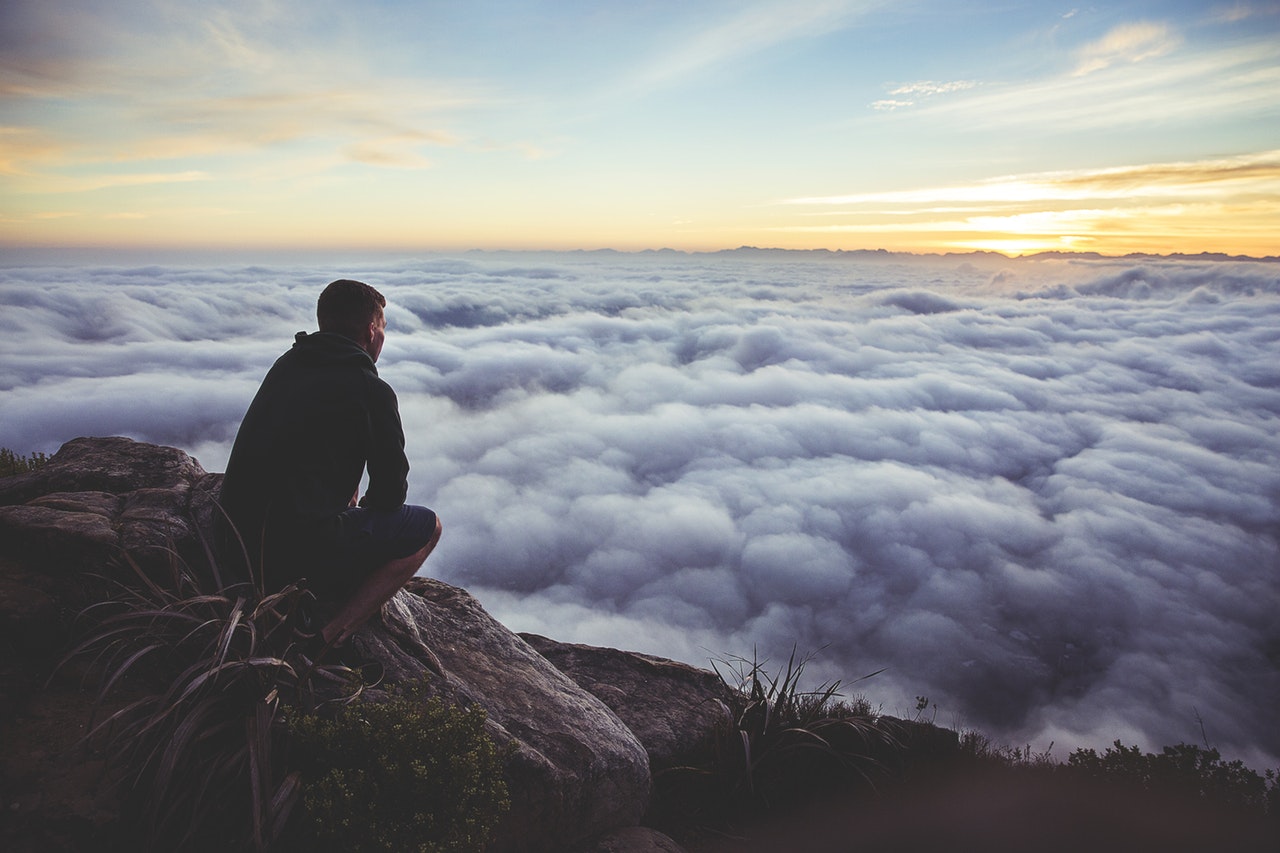
The most important part of your travel memoir is the takeaway, or the moral of the story. This advice applies to any memoir, by the way. Creating a travel log of what happened and when it happened is boring. It’s the literary equivalent to showing slide show pictures of your vacation.
But if you dig underneath the surface and discuss not only what happened but what you learned from what happened, you’ll forge a stronger connection with the reader.
Find the universal takeaway that any human over the age of 12 can understand. To do this effectively, you’ll need to take the reader on two separate but parallel journeys. Those two types of journeys involved in your travel memoir are the physical journey and the emotional one. It’s relatively easy to write about the events you experienced on your trip. It’s harder to write about what you learned from the trip.
The meaning of your book is tied to its theme. Whether you go with a popular memoir theme like self-discovery, coping with loss, or coming of age, your theme will help you connect with readers who identify with your struggles.
Pick and Choose the Right Stories

I’m one of those weirdos who believes there’s no such thing as a mundane story, just a mundane way of telling it. This is why it’s crucial to edit yourself and get edited by professional readers .
Without editing, you’re likely to prattle on and on about every event during your journey. And not just you— we’re all prone to rambling. This why we need editing.
When editing yourself, always keep the theme in mind. This will help you include the stories that support your theme and cut the stories that are nice, but ill-fitting. You must be a slave to theme. It’s that important.
Don’t try to tell the entire story blow by blow. Instead, piece together the story that fits in with your overall theme.
Don’t Make Yourself Look Too Good
Sometimes you’re going to sound like a jerk. You’re human. Your reader is human and they’ll understand. In fact, embracing your raw stupidity is what will make you endearing to the reader. It will also make your experience real and relatable which is the entire point of reading a travel memoir. Readers like to travel with you on your emotional journey, and hopefully observe your growth.
Unfortunately, self-preservation dictates that we try to look good at all times. Avoid that urge when writing your travel memoir. Or, at least, edit it out.
You must be willing to look foolish if this is ever going to work. When traveling to different places you’ve never been before, the reader won’t expect you to be completely prepared and perfect. You’re going to mess up. You’re going to offend people. You’re going to hate some of the food. You’re going to pack your preconceived stereotypes right next to your socks and undies. But you’re also going to connect with the reader because your honesty will be relatable.
Have an open mind when you hit the open road.
The story may not go as you’ve anticipated. You’ll be surprised and changed in ways that you never expected but that’s the gift of travel. To document how you’ve changed for the better, you’ve got to show the cringe-worthy before .
Titles Are Crucial
For a travel memoir, especially if you’re an unknown author, so much of your initial success will depend on a clear, catchy, or promising title. While I may not judge a book by it’s cover, I always judge a book by its title, and I suspect I’m not the only one.
J. Maarten Troost’s The Sex Lives of Cannibals wins my award for “Best Travel Memoir Title”. I purchased the book without even reading the first page just because it had a killer title (no pun intended).
That title was catchy, but your title need not be clever to be effective. Cheryl Strayed’s one word title, Wild, sets you up for the type of journey you’re about to take.
Then there’s the promising title, I'll Never Be French (no matter what I do) by Mark Greenside. The reader knows going in that the book will be about France and some rather misfortunate experiences.
Whether you choose a title that’s descriptive or intriguing, at the very least, make it memorable. It should be a title that your reader will remember when they’re recommending your memoir to friends.
Additional Resources
Before you go, check out these related posts:
- How to Find Your Writer's Voice
- Don't Make These 7 Mistakes When Penning Your Memoir
- How to Write a Memoir That People Care About
Enter your email for your FREE 7-Day Bootcamp and learn:
- 5 Unconventional Techniques to help you finish your Draft
- The Key to Getting Readers to Care About Your Characters
- How to Master Dialogue, even if you’re a First-Time Writer
- What You Need to Know to Hold Your Reader’s Interest
We've sent you an e-mail, thanks for subscribing!
What You Should Know About Travel Writing
- An Introduction to Punctuation
- Ph.D., Rhetoric and English, University of Georgia
- M.A., Modern English and American Literature, University of Leicester
- B.A., English, State University of New York
Travel writing is a form of creative nonfiction in which the narrator's encounters with foreign places serve as the dominant subject. Also called travel literature .
"All travel writing—because it is writing—is made in the sense of being constructed, says Peter Hulme, "but travel writing cannot be made up without losing its designation" (quoted by Tim Youngs in The Cambridge Introduction to Travel Writing , 2013).
Notable contemporary travel writers in English include Paul Theroux, Susan Orlean, Bill Bryson , Pico Iyer, Rory MacLean, Mary Morris, Dennison Berwick, Jan Morris, Tony Horwitz, Jeffrey Tayler, and Tom Miller, among countless others.
Examples of Travel Writing
- "By the Railway Side" by Alice Meynell
- Lists and Anaphora in Bill Bryson's "Neither Here Nor There"
- Lists in William Least Heat-Moon's Place Description
- "London From a Distance" by Ford Madox Ford
- "Niagara Falls" by Rupert Brooke
- "Nights in London" by Thomas Burke
- "Of Trave," by Francis Bacon
- "Of Travel" by Owen Felltham
- "Rochester" by Nathaniel Hawthorne
Observations About Travel Writing
Authors, journalists, and others have attempted to describe travel writing, which is more difficult to do than you might think. However, these excerpts explain that travel writing—at a minimum—requires a sense of curiosity, awareness, and fun.
Thomas Swick
- "The best writers in the field [of travel writing] bring to it an indefatigable curiosity, a fierce intelligence that enables them to interpret, and a generous heart that allows them to connect. Without resorting to invention , they make ample use of their imaginations. . . . "The travel book itself has a similar grab bag quality. It incorporates the characters and plot line of a novel, the descriptive power of poetry, the substance of a history lesson, the discursiveness of an essay , and the—often inadvertent—self-revelation of a memoir . It revels in the particular while occasionally illuminating the universal. It colors and shapes and fills in gaps. Because it results from displacement, it is frequently funny. It takes readers for a spin (and shows them, usually, how lucky they are). It humanizes the alien. More often than not it celebrates the unsung. It uncovers truths that are stranger than fiction. It gives eyewitness proof of life’s infinite possibilities." ("Not a Tourist." The Wilson Quarterly , Winter 2010)
Casey Blanton
- "There exists at the center of travel books like [Graham] Greene's Journey Without Maps or [V.S.] Naipaul's An Area of Darkness a mediating consciousness that monitors the journey, judges, thinks, confesses, changes, and even grows. This narrator , so central to what we have come to expect in modern travel writing , is a relatively new ingredient in travel literature, but it is one that irrevocably changed the genre . . . . "Freed from strictly chronological , fact-driven narratives , nearly all contemporary travel writers include their own dreams and memories of childhood as well as chunks of historical data and synopses of other travel books. Self reflexivity and instability, both as theme and style , offer the writer a way to show the effects of his or her own presence in a foreign country and to expose the arbitrariness of truth and the absence of norms." ( Travel Writing: The Self and the World . Routledge, 2002)
Frances Mayes
- "Some travel writers can become serious to the point of lapsing into good ol' American puritanism. . . . What nonsense! I have traveled much in Concord. Good travel writing can be as much about having a good time as about eating grubs and chasing drug lords. . . . [T]ravel is for learning, for fun, for escape, for personal quests, for challenge, for exploration, for opening the imagination to other lives and languages." (Introduction to The Best American Travel Writing 2002 . Houghton, 2002)
Travel Writers on Travel Writing
In the past, travel writing was considered to be nothing more than the detailing of specific routes to various destinations. Today, however, travel writing has become much more. Read on to find out what famous travel writers such as V.S. Naipaul and Paul Theroux say about the profession.
V.S. Naipaul
- "My books have to be called ' travel writing ,' but that can be misleading because in the old days travel writing was essentially done by men describing the routes they were taking. . . . What I do is quite different. I travel on a theme . I travel to make an inquiry. I am not a journalist. I am taking with me the gifts of sympathy, observation, and curiosity that I developed as an imaginative writer. The books I write now, these inquiries, are really constructed narratives." (Interview with Ahmed Rashid, "Death of the Novel." The Observer , Feb. 25, 1996)
Paul Theroux
- - "Most travel narratives—perhaps all of them, the classics anyway—describe the miseries and splendors of going from one remote place to another. The quest, the getting there, the difficulty of the road is the story; the journey, not the arrival, matters, and most of the time the traveler—the traveler’s mood, especially—is the subject of the whole business. I have made a career out of this sort of slogging and self-portraiture, travel writing as diffused autobiography ; and so have many others in the old, laborious look-at-me way that informs travel writing ." (Paul Theroux, "The Soul of the South." Smithsonian Magazine , July-August 2014) - "Most visitors to coastal Maine know it in the summer. In the nature of visitation, people show up in the season. The snow and ice are a bleak memory now on the long warm days of early summer, but it seems to me that to understand a place best, the visitor needs to see figures in a landscape in all seasons. Maine is a joy in the summer. But the soul of Maine is more apparent in the winter. You see that the population is actually quite small, the roads are empty, some of the restaurants are closed, the houses of the summer people are dark, their driveways unplowed. But Maine out of season is unmistakably a great destination: hospitable, good-humored, plenty of elbow room, short days, dark nights of crackling ice crystals. "Winter is a season of recovery and preparation. Boats are repaired, traps fixed, nets mended. “I need the winter to rest my body,” my friend the lobsterman told me, speaking of how he suspended his lobstering in December and did not resume until April. . . ." ("The Wicked Coast." The Atlantic , June 2011)

Susan Orlean
- - "To be honest, I view all stories as journeys. Journeys are the essential text of the human experience—the journey from birth to death, from innocence to wisdom, from ignorance to knowledge, from where we start to where we end. There is almost no piece of important writing—the Bible, the Odyssey , Chaucer, Ulysses —that isn't explicitly or implicitly the story of a journey. Even when I don't actually go anywhere for a particular story, the way I report is to immerse myself in something I usually know very little about, and what I experience is the journey toward a grasp of what I've seen." (Susan Orlean, Introduction to My Kind of Place: Travel Stories from a Woman Who's Been Everywhere . Random House, 2004) - "When I went to Scotland for a friend's wedding last summer, I didn't plan on firing a gun. Getting into a fistfight, maybe; hurling insults about badly dressed bridesmaids, of course; but I didn't expect to shoot or get shot at. The wedding was taking place in a medieval castle in a speck of a village called Biggar. There was not a lot to do in Biggar, but the caretaker of the castle had skeet-shooting gear, and the male guests announced that before the rehearsal dinner they were going to give it a go. The women were advised to knit or shop or something. I don't know if any of us women actually wanted to join them, but we didn't want to be left out, so we insisted on coming along. . . ." (Opening paragraph of "Shooting Party." The New Yorker , September 29, 1999)
Jonathan Raban
- - "As a literary form, travel writing is a notoriously raffish open house where different genres are likely to end up in the bed. It accommodates the private diary , the essay , the short story, the prose poem, the rough note and polished table talk with indiscriminate hospitality. It freely mixes narrative and discursive writing." ( For Love & Money: Writing - Reading - Travelling 1968-1987 . Picador, 1988)
- - "Travel in its purest form requires no certain destination, no fixed itinerary, no advance reservation and no return ticket, for you are trying to launch yourself onto the haphazard drift of things, and put yourself in the way of whatever changes the journey may throw up. It's when you miss the one flight of the week, when the expected friend fails to show, when the pre-booked hotel reveals itself as a collection of steel joists stuck into a ravaged hillside, when a stranger asks you to share the cost of a hired car to a town whose name you've never heard, that you begin to travel in earnest." ("Why Travel?" Driving Home: An American Journey . Pantheon, 2011)
- Defining Nonfiction Writing
- Creative Nonfiction
- Point of View in Grammar and Composition
- 11 Things You Should Know About Trees
- What Are the Different Types and Characteristics of Essays?
- Examples of Images in Poetry, Fiction, and Nonfiction
- Description in Rhetoric and Composition
- A Guide to All Types of Narration, With Examples
- What Is Prose?
- 100 Major Works of Modern Creative Nonfiction
- Writing the Parts of a Stage Play Script
- Great Summer Creative Writing Programs for High School Students
- Our Four Seasons: Winter, Spring, Summer, Autumn
- The Four Seasons in Spanish
- Architecture Basics - Learn What's What and Who's Who
10 Travel Book Subgenres with Examples

You may think that all travel books are the same, recounting stories of protagonists traveling, struggling, and returning home transformed. While this is a common narrative structure in travel books, the travel writing landscape is in fact much more diverse and complicated than that. This post will discuss 10 of the most common travel book subgenres, and it will give you some examples of each one.
Travel book subgenres
Like other literary genres, like science fiction and romance, there is a variety of “flavors” in travel books that depend on not just the content of the book, but also how they are put together and organized. For lack of a better term, I’m calling these “flavors,” “frameworks,” and “organizational principles” subgenres .
The subgenres of the travel book are not well known. Case in point: browsing Amazon’s Science Fiction & Fantasy category reveals some of its subgenres like cyberpunk, dystopian, space opera, and time travel, but browsing Amazon’s Travel category reveals mostly countries, regions, and continents. Curiously, there is also a subcategory under Travel called “Travel Writing.” Aren’t all the books listed under the Travel category “travel writing”?
To be sure, guidebooks and other types of books that deal with countries, regions, and continents call the Travel category home. But readers and writers of travel literature find this categorical ambiguity frustrating. So, today we’re going to clear the air and discuss 10 travel book subgenres and give some examples of each.
But first, some caveats. These subgenres are not mutually exclusive. Writers sometime combine elements of multiple subgenres or subvert them altogether. And, there are more travel book subgenres, flavors, frameworks, or whatever you want to call them than the 10 we discuss below. I discuss a few more, along with travel writing tropes, in the Travel Book Guidebook , which you can download for free here .
Caveats aside, let’s dive into the travel book subgenres.
The Travelogue
The travelogue is the prototypical travel book subgenre. In the travelogue, the author recounts the experience of traveling to or through some place. It is usually a step-by-step account or description of what the author saw, did, experienced, etc. If you journal when you travel, your diary can be considered a rough travelogue. Indeed, this is the basis of many of the other subgenres below.
Examples: Ibn Battuta’s The Rihla ; John Steinbeck’s Travels with Charley: In Search of America ; Patrick Leigh Fermor’s A Time of Gifts ; Isabella Bird’s The Yangtze Valley and Beyond .
The quest is a travel book framework where the author travels in search of something specific, or to do something specific. It could involve searching for a physical object, achieving a goal, or reaching a destination. What drives the story here is the emphasis on something external to the author. Note: the protagonist doesn’t necessarily need to achieve the goal.
Examples: Peter Matthiessen’s The Snow Leopard ; Bill Bryson’s A Walk in the Woods ; Sophy Robert’s The Lost Pianos of Siberia ; Erika Schelby’s Looking for Humboldt .
The Adventure
In the adventure subgenre, the author/protagonist pushes the boundaries of human endurance and strength, either mental and/or physical. The adventure usually involves overcoming the elements and the limitations of the self. It includes feats of power, endurance, strength, and resolve. The adventure pits man (and historically it has been most often men) against nature and the environment. The adventure is a dangerous one.
Examples: Apsley Cherry-Garrard’s The Worst Journey in the World ; Wilfred Thesiger’s Arabian Sands ; John Krakauer’s Into Thin Air ; Arlene Blum’s Breaking Trail .
The Journey
The journey is a travel book framework where the story’s emphasis is on something personal in nature. This subgenre is like the quest, but an inner, spiritual, or emotional emphasis drives the story. This is like a book of self-discovery more than it is a book of discovery. Every travel book necessarily has a subjective element to it, but the individual subjective experience here, the so-called “inner journey,” takes narrative precedence over the exterior journey.
Examples: Elizabeth Gilbert’s Eat, Pray, Love ; Cheryl Strayed’s Wild ; Peter Matthiessen’s The Snow Leopard ; Virtually every book written about the Camino de Santiago.
The Investigation
The investigation is a subgenre of travel where the protagonist travels somewhere to solve a mystery or a puzzle. This could be a crime, a disappearance, or an unsolved mystery. It could also have a journalistic or anthropological feel.
Examples: David Grann’s The Lost City of Z: A Tale of Deadly Obsession in the Amazon ; John Berendt’s Midnight in the Garden of Good and Evil .
Gonzo Journalism
This subgenre riffs off of the investigation subgenre, but the author/protagonist becomes a central part of the story. Gonzo journalism often has an eccentric, ridiculous, or a comedic feel to it.
Examples: Hunter S. Thompson’s Fear and Loathing Las Vegas ; Charles Nicholl’s The Fruit Palace .
Echotourism (Following in the Footsteps of…)
In this subgenre, the author follows in the footsteps of another traveler or author. The author/protagonist attempts to visit the places an earlier traveler visited.
Examples: Alastair Humphreys’s My Midsummer Morning ; Paul Theroux’s Ghost Train to the Eastern Star ; Nick Hunt’s Walking the Woods and the Water .
The Big Idea
A “big idea” or a central concept connects the material in these types of travel books. The narratives in these books do not always move chronologically; the chapters often “bounce around” independently and as thematically-connected essays. These books often use a destination or a series of destinations to illustrate, explain, or comment on a bigger idea or concept.
Examples: Victoria Preston’s We Are Pilgrims ; Dan Richards’s Outposts ; Cal Flyn’s Islands of Abandonment ; Pico Iyer’s Video Night in Kathmandu ; Robert Macfarlane’s Underland .
The Expat Experience
This travel book subgenre recounts the experiences of someone living or moving somewhere different from their home country. Unlike books about passing through a location temporarily, these books involve the author moving to a place for an indefinite period of time and revealing what it is like to move and/or live there. This framework has been particularly successful when blended with humor or wit.
Examples: Chris Stewart’s Driving Over Lemons ; Peter Mayle’s A Year in Provence ; Peter Hessler’s River Town: Two Years on the Yangtze .
In this travel book subgenre, front and center is the mode of transport, be it foot, kayak, bicycle, motorcycle, car, boat, or train.
Examples: Dervla Murphy’s Full Tilt: Ireland to India with a Bicycle ; Monisha Rajesh’s Around the World in 80 Trains ; Ernesto Che Guevara’s The Motorcycle Diaries .
Know more travel book subgenres or examples?
There are more travel book subgenres, flavors, frameworks, or whatever you want to call them than the 10 we discussed above. In fact, I discuss a few more, along with travel writing tropes, in the Travel Book Guidebook , which you can download for free here .
But if you know other travel book subgenres and examples that we should include on this list, let us know in the comments section below!
Last Updated on 17 July 2021 by Travel Writing World
Share this:
- Click to share on Twitter (Opens in new window)
- Click to share on Facebook (Opens in new window)
- Click to share on WhatsApp (Opens in new window)
- Click to share on Pinterest (Opens in new window)
- Click to share on Tumblr (Opens in new window)
- Click to share on Reddit (Opens in new window)
- Click to print (Opens in new window)
- Click to email a link to a friend (Opens in new window)
- Click to share on LinkedIn (Opens in new window)
- Click to share on Pocket (Opens in new window)
- Click to share on Telegram (Opens in new window)

Travel Writing World
With an emphasis on travel books and long-form travel literature, host Jeremy Bassetti talks with the world’s most inspiring travel writers about their work and about the business and craft of travel writing in this award-winning podcast and website. In addition to the podcast, the site also features travel writer profiles, book reviews, and articles.
You may also like
Types of travel writing, travel writing awards competitions, how to self publish a travel book (or..., capturing a sense of place in travel blogging, the top travel writing and blogging conferences, surviving coronavirus quarantine with travel books.
Travel vignettes
A travel short, flash format of varying length, that attempts to capture and convey a specific experience of a place, culture, travel encounter. Example: Contact! by Jan Morris (2009)
That is a good one, and it has parallels to what PICO IYER most recently wrote with “A Beginner’s Guide to Japan.” Thanks for the note.
Leave a Comment Cancel Reply
Save my name, email, and website in this browser for the next time I comment.
Notify me of follow-up comments by email.
This site uses Akismet to reduce spam. Learn how your comment data is processed .
This website uses cookies to improve your experience. We'll assume you're ok with this, but you can opt-out if you wish. Accept Read More
Insider Secrets | 10 March 2012
How to write a travel book in 5 easy steps.
Best-selling author Peter Moore shares the secrets he (l)earned writing six popular travel narratives

Peter Moore will be at The Adventure Travel Show, talking in the Wanderlust Travel Writing Workshop on the 25th of January. Tickets for the workshop cost from £55; this includes admission to the show and a £10 voucher for use on the Wanderlust stand. http://ow.ly/sKABd
Advance tickets to the show are now on sale. Get your tickets for only £5 (that’s saving £5 off the door price!) by quoting ‘WANDERLUST’ when booking tickets online at www.adventureshow.com
I get a lot of emails from people asking me how to become a travel writer. And why not? It’s a great job. Unfortunately, like all great jobs competition is very tough. I wouldn’t mind being a radio DJ, for example, but I don’t fancy my chances of stepping into Zane Lowe's shoes any time soon.
Having said that, with a little bit of perseverance, anything is possible. It took me over six years to get my first book published. If I’d known then what I know now, it probably would have only taken five!
In my experience getting published boils down to four things. A strong idea. A unique voice. Good writing. And a good deal of perseverance.
What’s your big idea?
There has to be a reason why. Why did you do this journey rather than another one? Some people follow in the footsteps of explorers of the past. Others attempt to be the first to do a particular journey. Some people are trying to find themselves, start a new life. It really doesn't matter what the reason is, as long as it is a good one.
Some examples:
Notes From a Small Island by Bill Bryson. Bill takes one last look around England before returning to the US.
Holy Cow by Sarah Macdonald. Sarah road tests different religions in the spiritual supermarket of India.
Crazy Rive r by Richard Grant. Richard attempts to be the first person to travel the length of the Malagarasi River.
A strong, easy-to-encapsulate reason why is vital because it’s the hook everyone will use – from you or an agent trying to interest publishers, through to the sales and marketing departments of the said publisher trying to get publicity for your book.
One thing to keep in mind is that most successful travel books are aspirational. Whether it’s renovating an old house in Tuscany, starting a new life in Paris or climbing Everest, each chronicle something that people would love to do if they could. My most popular book in the UK has been The Wrong Way Home. It tells the story of my journey overland from London to Sydney, a trip a lot of people have thought of doing (and often end up doing bits and pieces of it). Similarly, my book about riding around Italy on a Vespa, Vroom with a View , did really well in Australia. Aussies, it seems, have a hankering for the dolce vita on two-wheels. Or have a fixation with Sophia Loren. Like I did.
If you're finding it difficult to single out one idea, write a one or two paragraph overview of your journey – or your idea for a journey – instead. Remember the who, what, where, when and why? It should lead you to your big idea.
Finding your voice
Your 'voice' is just the publishing industry’s way of describing your writing style. The biggest mistake aspriring writers make is to try and sound like someone else. Or worse, write like they expect 'proper' literature to sound.
When Andy McNab, the former SAS soldier-turned-author, first started out, he was told to write like he was telling a story to his mates down the pub. It’s good advice. Think of all the little tricks you put into telling a story so that it gets a laugh or retains the interest of your friends. If you’re not a big drinker, don’t worry. Pretend you’re meeting friends for a cup of coffee.
Another trick that some writers use is to imagine they are writing a letter to a particular friend. Some even go as far as writing ‘Dear John’ at the top (remove it, of course, before you send your manuscript off). That way you avoid being a pale imitation of Bill Bryson or Eric Newby. You’re being yourself, and that’s the best way to get a unique voice.
It sounds more difficult than it really is. As an aspiring travel writer you’ve probably already developed a unique voice writing the emails to friends and family while you were on the road. Or on the blog you've been keeping. I get a lot of emails from people who say that friends and family have encouraged them to write after enjoying the emails they sent while they were travelling. That’s because they have discovered their 'voice'.
A few practical writing tips
One thing I've taken for granted is that you can actually write. Maybe not of a Pulitzer Prize winning standard, but your sentences should be well constructed, your ideas clearly expressed and your story told in a way that maintains a reader's interest.
The good news is that writing about a journey gives you a head start over a lot of other writers. You already have your narrative drive in place – you have a beginning and an end and a journey that that takes you from one to the other. But there are some other things you should keep in mind.
Dialogue, dialogue, dialogue
I can’t stress how important good dialogue is. Travel writing is about describing people and places. And you can do that a lot easier with dialogue. It 'shows' people rather than 'tells' them. You'll be surprised how just a little bit of dialogue elevates your writing.
How do you get good dialogue? Just listen. You’ll be amazed by the things people say. I’m certainly not creative enough to make up the things that have been said to me in my travels. In The Wrong Way Home, for example, the guy who came up and told me Australia was safe in the event of a nuclear war. 'I have worked in a nuclear facility in the States,' he said. 'Your country is safe!'
How do you remember it? Write it down! I keep a small notepad in my back pocket and write things down when I hear them. I don’t take dictation. I let situations play out and then duck around a corner and scribble it down!
If you've started writing something and it hasn’t got much dialogue, try and re-write it using dialogue. You’ll be amazed by the difference it makes.
Leave it out!
Deciding what to leave out is a key skill and probably the hardest thing to do. We all have trouble 'killing our babies.' I’ve been sent the odd chapter or two by people and the biggest problem was that they included every small detail. One guy sent me a document recounting one small part of his journey in Mali that ran to 50 pages and detailed boiling water for a cup of tea.
It’s a problem I still face. One of my latest books was about buying an old Vespa in Italy and riding it from Milan to Rome. I had a fantastic scene where I visited an old Vespa mechanic in Sydney. He had a great workshop with old posters on the wall and a coterie of little old Italian guys hanging around a beat up coffee machine. But I couldn’t use it without slowing down the whole narrative. So I had to cut it free.
It’s like movies. A lot of scenes end up on the cutting floor. A boring all day bus journey can be easily pared down to ‘By evening we were in Esfahan …’

More like this
Want more tips on how to improve your travel writing ? Join Wanderlust Journeys On Assignment in Istanbul or travel to Berlin for a travel writing weekend packed with inspiration, advice, tips, adventure on-the-ground and so much more.
Get paid to travel – become a travel writer | Advice... More

Travel: A Literary History takes in all the greats, from Marco Polo to Colin Thubron. Take tips from them, says its author Peter Whitfield More

Summersdale commissioning editor Jennifer Barclay gives you the inside scoop on how to get your travel memoir on the shelves More
Related Articles
Looking for inspiration.
Join our newsletter
Get the very best of Wanderlust by signing up to our newsletters, full of travel inspiration, fun quizzes, exciting competitions and exclusive offers.
8 Tips for Writing a Travel Book
July 07, 2021 (Last Updated July 06, 2021)

Traveling is absolutely legendary. Not only do you get to meet new people and make new connections, but you’ve also got the chance to taste new foods and explore new places. Traveling makes you curious, excited, and it gives your life a whole new meaning. It can be your perfect escape plan or a mysterious experience.
But you already know this – you’ve probably traveled so much you could write a book . In fact, writing a travel book is an effective idea; it could help many people along the way and give you the financial resources to travel even more . In order to write a travel book, you’ve got to be highly knowledgeable of all the places included in your book and be prepared to publish. Here are some tips on how to get ready to write a travel book .
Know why you’re writing
The first thing you have to figure out is why you are writing. If you truly care about your work, the outcome will be different – your writing will be exciting, novel, and authentic. If, however, you’re doing it only for money (for example), you might not be as successful (not to say that the financial gains are not an incentive, but you should find a higher purpose to write for).
Ask yourself, why do you want to share your knowledge with others? What is the true reason behind your actions? What do you want to accomplish by writing this piece? Figuring out these questions can be a great starting point.
Make this book unique
Every writer has a different perspective on their travels. While for some, traveling to the US is mostly a culinary experience, for others, it might be the connections that they make or the monuments that they see. Find out what you truly care about when you’re traveling. What do you pay the most attention to? What catches your eye? If you figured that out, it’s time to give your book an authentic vibe. Focus on the things you enjoyed the most and offer tips in that arena. If you’re paying attention to the small details, then write about those. If you’re more focused on the bigger picture, write about that. Make this book your own.
Understand the general rules of travel writing
Knowing how to write a travel book is still important, even if you can work around it and personalize it according to your taste. According to Dan at essay writer service , here are some things to remember:
· Write it in first-person.
· Your story must be told in the past tense.
· Your voice must be conversational – being too strict won’t connect with the reader.
· Try to include as many sensory details as you can.
· Offer insightful advice and useful tips for sightseeing and navigating into a new culture.
· Make your stories and advice relatable to your readers.
Edit, edit, edit
Now that you’ve written your first draft, it’s time to edit. Do not skip this step or try to continue without editing. Editing is as important as writing the book – if your writing contains errors or grammar mistakes, you can say goodbye to your followers/readers. You can use any online editing tool available such as Grammarly or Hemingway. You could also connect with one of the writers at uk.bestessays.com to get their advice on your writing. There are many ways in which you can check your spelling and grammar, so do it as soon as you’re done with your first draft.
Do not use clichés
Travelers hate clichés. There, I said it. Get rid of those. While it’s okay to write insightful descriptions of your travels, try to avoid adding too many adjectives to your text. Try to keep it simple and concise. If there is something that stood out to you (and you want to describe it), then do it – but do it from your heart. Don’t do it for any other reason.
You can! So be confident about it
You might be thinking, ‘there must be so many unpublished travel book authors out there!” and you’d be right. Yes, there are. But that should not scare you away – it should empower you to be original and true to yourself. As I mentioned before, do it for the right reason, make it authentic, and you’ll sell out super-fast.
Continue exploring
Practice makes perfect, as they say. So don’t stop exploring once you’re done writing your book. Keep going and gather new information that could help you write your next masterpiece.
Wrapping Up
Writing a travel book is an excellent way to be helpful amongst travelers. You could give back what you’ve received based on your own experience. How awesome is that? You’ve got this, so start writing!
Ready to print your travel book? Partner with 48 Hour Books and place an order today!
Justin is a travel writer for essay writer service and a blogger. He likes to discuss travels and share his own ideas with readers on different blogs and forums. Currently, he is working as an editor at uk.bestessays.com .
Print painlessly
Sign up for the 48 Hour Books newsletter to learn how to self-publish your book — and get it printed faster with us than anywhere else.
Lindsey Archibald October 27, 2023
Article is inspiring and just in time.
martin euston September 19, 2023
Travelling from Uk to New Zealand then onto the USA and back to UK. I am sure their will be plenty of stories to tell, and would like your advice about a potential book about the experience.
48 Hr Books October 30, 2023
Hi Martin! Feel free to call us and we'd be happy to answer any questions you have about printing a travel book: 800-231-0521
Subscribe to the 48 Hour Books Newsletter for more self-publishing tricks and tips, author spotlights, notices about upcoming deals, and more!
Popular Posts
Recent posts, search by date, we’re moving to a new location.
Orders may be delayed while we finish settling in. Click here for more info. Thank you for your patience!
- BOOK RECOMMENDATIONS
9 Travel Writings That Will Take You on a Journey
Enjoy a sun-soaked voyage, a cross-country road trip, and other unforgettable adventures—all without leaving your couch.

It may be cliché to say that books can take us to places we’ve never been, but it’s an apt cliché for travel writing. If done right, it evokes the feelings described by those corny school library posters: that we, too, have been traveling, with books as our vehicle and tour guide.
Below, we’re celebrating the best travel writings out there. The following books describe places and journeys in such moving, memorable ways that they feel like trips themselves—whether they're fun family vacations or harrowing adventures.
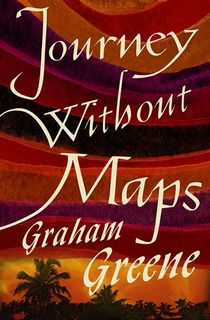
Journey Without Maps
By Graham Greene
One of the greatest authors of the 20th century, Graham Greene is the man behind such fiction classics as The Quiet American and The End of the Affair . But prior to these successes, he penned a memoir about his transformative expedition through uncolonized Africa. In 1935, a 30-year-old Greene set out for Liberia with his cousin, where they set out on a perilous 350-mile adventure that not only showed them new corners of the world, but new corners within themselves. Journey Without Maps is the result of that trip, and it's a masterful—or "the best," according to The Independent —example of evocative, eye-opening travel writing.
Related: 9 Must-Read Graham Greene Books

Desert Places
By Robyn Davidson
The Rabari are a nomadic people who live in northwest India, traveling from place to place while raising livestock to sustain themselves. They move seasonally, and for one year, writer Robyn Davidson moved with them. The fruit of Davidson’s journey is Desert Places— an eye-opening book that charts these migrations, describes Davidson's own struggles within Indian society, and examines the harmful effects of modernization on the Rabari's traditional spaces. It's fascinating, it's entertaining—and it just might have you yearning for your own desert adventure.
Related: 11 Books That Let You Travel the World
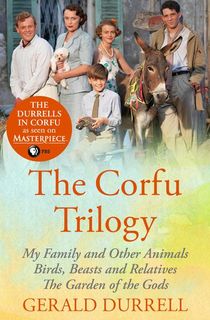
The Corfu Trilogy
By Gerald Durrell
Durrell was a British conservationist and naturalist, and the work he did throughout his life—from television programs to his numerous books—usually focused on the natural world. The Corfu Trilogy is no exception, but there’s plenty of other stuff going on here, too: As Durrell recounts his childhood on the Greek island of Corfu, he imbibes his anecdotes with humor, poignancy, and vivid description of the wildlife. A tribute to family and the great outdoors, this trio of memoirs is a one-way ticket to paradise that any travel writing fan will love.
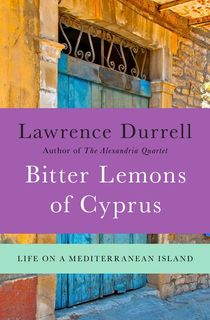
Bitter Lemons of Cyprus
By Lawrence Durrell
Speaking of the Durrell family, Gerald’s older brother was also a critically-acclaimed author . Though Lawrence Durrell first made his living and reputation as a novelist, he eventually lent his talents to the world of nonfiction. In 1957, he published Bitter Lemons of Cyprus , the autobiographical story of his three years on a Mediterranean island. The award-winning memoir focuses primarily on its setting—the landscape, the people, and the politics—and its lasting impact (both good and bad) on Lawrence.
Related: Read an Excerpt from Lawrence Durrell, a Stunning Biography
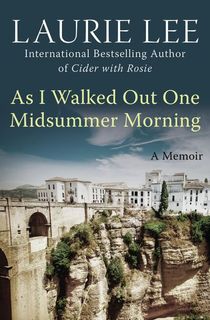
As I Walked Out One Midsummer Morning
By Laurie Lee
Laurie Lee was a British poet with a flair for the romantic. In 1934, he struck out from his home in London and walked all the way to the Cotswolds. The following year, he travelled across Spain—only to find that the country was on the brink of civil war. He describes every detail in his sprawling, lyrical memoir, As I Walked Out One Midsummer Morning .
Want more travel memoirs? Sign up for the Early Bird Books newsletter, and get the best daily ebook deals delivered straight to your inbox.
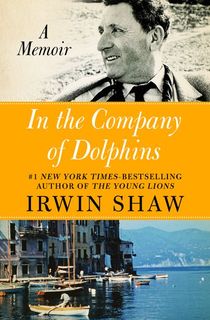
In the Company of Dolphins
By Irwin Shaw
Irwin Shaw is a titan of literature, and In the Company of Dolphins will particularly interest travel writing devotees. It tells the story of his family’s 1960s sailing adventure, which they took from St. Tropez to Venice. In it, Shaw reminiscences about his childhood dreams of reaching the shores of New York, and ruminates on his quest to do something similar—and even grander—as a grown man. It’s a fun, accessible travel memoir perfect for a sunny day.
Related: 10 Books That Make You Want to Move to Italy

A Walk in the Woods
By Bill Bryson
Bryson is known for his superb travel writing, but not necessarily his prowess as an outdoorsman. That’s abundantly clear in A Walk in the Woods , his funny and moving account of hiking the Appalachian Trail. Though his massive trek—which he completed with a friend even less suited for the challenge—was filled with mishaps and ended early, the book is a thought-provoking look at the beauty and history of the 2,100-mile trail.
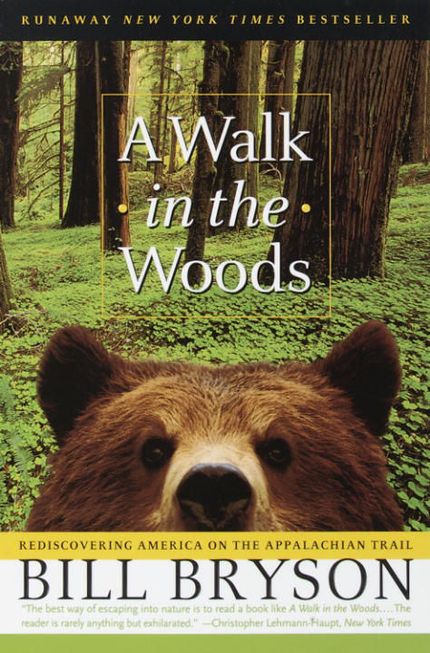
The Songlines
By Bruce Chatwin
A complex and unique book, The Songlines is at once a memoir, a novel, and travelogue. Bruce Chatwin recounts his time in Alice Spring, Australia, where he researched Aboriginal songs. These songs are central to their culture, functioning as invisible guides through their most important traditions and practices. In addition to Chatwin's imagined narratives, there are his conversations with indigenous Australians and Outback settlers, quotes from other writers, and his fascinating insights into “settled people and wanderers…human aggression and pacifism” ( Publishers Weekly ).
Related: Watch a Trailer from Werner Herzog's Documentary About Bruce Chatwin
.jpg)
Travels with Charley in Search of America
By John Steinbeck
Steinbeck is rightly famous for novels like The Grapes of Wrath and Of Mice and Men , but this lesser-known nonfiction book is a true gem. It follows his cross-country road trip in 1960, as he drives an R.V. from Long Island through nearly forty states. He brings along his legendary powers for observation and keen literary insights—as well as his dog-slash-travel buddy, Charley.
Related: Road Trip Books and Songs for Your Summer Vacation
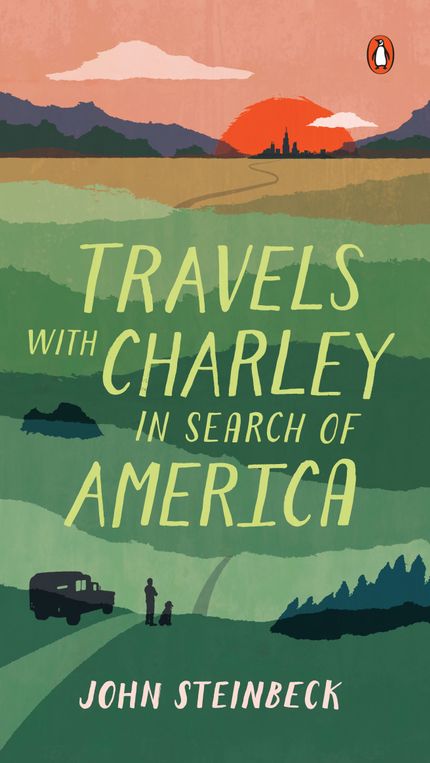
Featured photo: Andrew Neal/ Unsplash
Get the best daily book deals delivered to your inbox
© 2024 OPEN ROAD MEDIA
- We are a participant in the Amazon Services LLC Associates Program, an affiliate advertising program designed to provide a means for us to earn fees by linking to Amazon.com and affiliated sites.
The Best Travel Literature of All Time
Like many travellers, you may have found yourself immersed in the voyages of those who have gone before you from time to time. While living vicariously is no replacement for being on the road, there are some utterly wonderful nonfiction travel books out there, which are the next best thing.
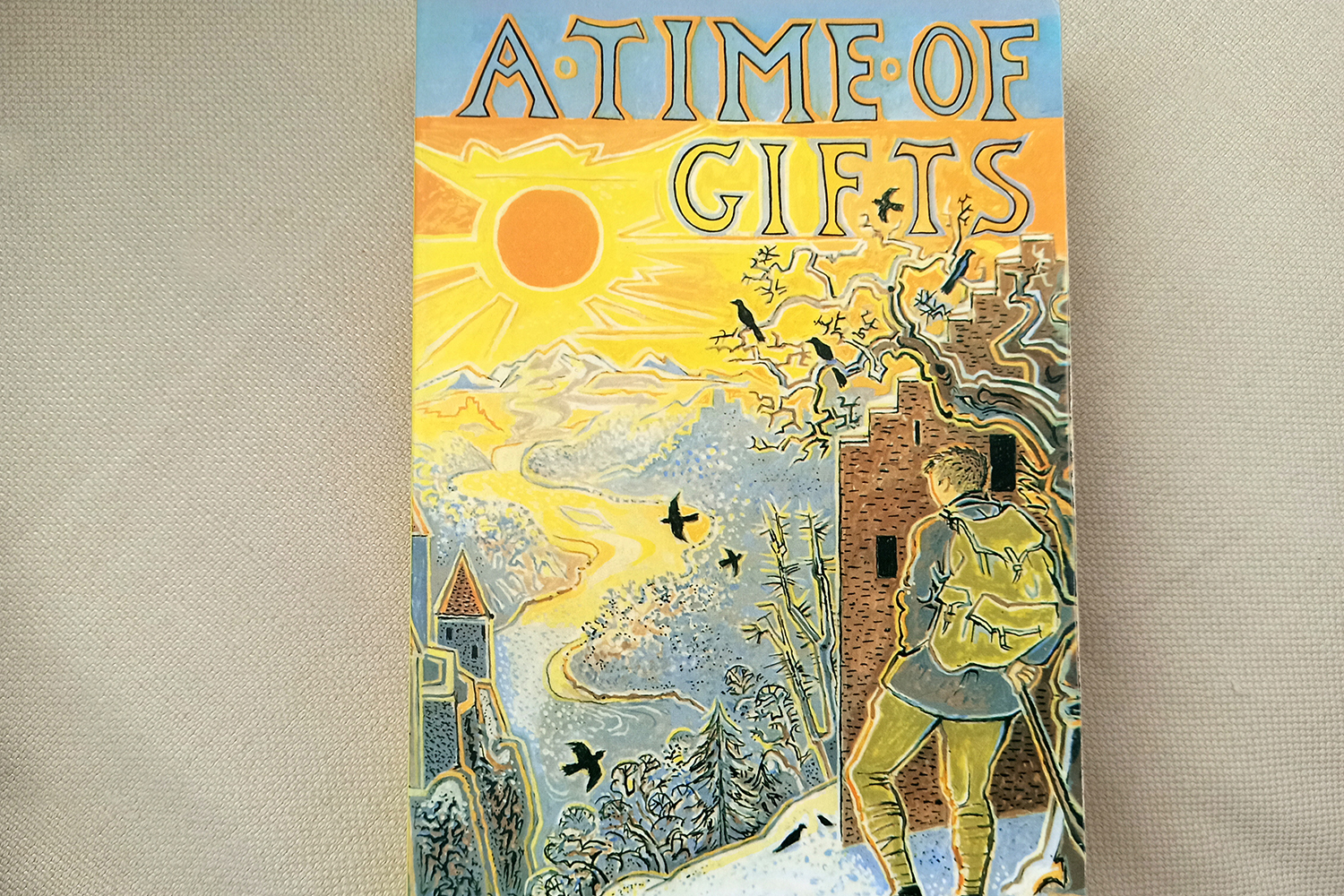
A Time of Gifts by Sir Patrick Leigh Fermor (Photo: Paul Stafford for TravelMag.com)
It’s quite genuinely impossible to create a comprehensive list of the best travel literature. While there’s a lot of replication of these types of lists out there, some books endure precisely because of their importance at the time or to other writers. Although some authors listed below deserve to have more than one of their books featured on this compendium of the greatest travel literature, only their finest work has been included. Consider it your gateway to that writer’s greater oeuvre, if you’ve not read any of their work previously; a reminder if you have. Similarly, non-male writers have often been unfortunately overlooked in the past and some real gems that deserve to be on the best travel literature of all-time lists have been overlooked.
The following aims to redress the balance a little. Consideration is also given to some of the works that defined people who are now better-known for their other exploits, because there’s no greater adventure than that of somebody whose travels inspired them to do something more important or lasting in the world beyond merely moving through space and time for travel’s sake. Here are twenty of the best pieces of travel literature ever written (theoretically), to guide you to your next read, to find inspiration for your next trip, or to simply use as a general reading checklist until your next journey.
A Time of Gifts (1977) – Sir Patrick Leigh Fermor
Writing about Paddy Leigh Fermor in 2020, it would be easy to dismiss the great writer as a privileged individual who was fortunate to stay with royalty and the well-to-do all across Europe as he sauntered from one place to the next. But that would be an awful disservice. A Time of Gifts is the first of a trilogy of books documenting his journey, on foot, from the Hook of Holland to Constantinople (Istanbul). His scholarship and complete immersion in every culture he encountered helped his writing transcend mere travel literature to reach a higher level of writing. You never feel as though he’s an outside observer trying to make sense of the foreign by superimposing his own beliefs. His prose has been described as baroque, and is densely layered with a deep intelligence, understanding and, above all, passion for everything he encounters. The trip itself was undertaken in 1933/4 and the Europe that Fermor uncovers on his peregrinations is one which is beginning to spiral blindly into major conflict. Somehow this aspect makes the random acts of kindness he experiences across Germany and the rest of the continent even more bittersweet.
Publisher: John Murray, Buy at Amazon.com
Arabian Sands (1959) – Sir Wilfred Thesiger
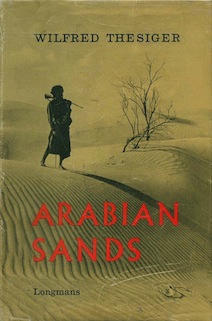
Arabian Sands by Wilfred Thesiger (Photo: courtesy of P.S. Burton via Wikimedia Commons)
Another travel literature classic is Thesiger’s intrepid anthropological look at Bedouin culture and lifestyle in one of the remotest, most inhospitable places on earth: the Arabian Peninsula’s Rub’ al Khali. The setting for the journey is amid the embers of World War II, the repercussions of which were being felt worldwide, including among the Bedouin tribes who’d lived much in the same way they always had until the outside world intruded. In effect, this book offers a snapshot of a remarkable culture that was fast altering, which is what makes this, and many of the books written during the reign of the British Empire, fascinating historical documents. For all of the rightful condemnation of European colonialism, one thing is clear in this book: the fascination and inquisitive nature of the many British scholarly individuals sent to far-reaching corners of the globe created an immensely valuable cache of first-person accounts of cultures and peoples that may not have been recorded otherwise amid the inevitable and inescapable rise of globalisation of the time.
Publisher: Penguin Classics, Buy at Amazon.com
Black Lamb and Grey Falcon (1942) – Rebecca West
West’s voluminous, in-depth examination of Yugoslavia during her time travelling there in 1937 was designed to explore how the country was a reflection of its past. West spent six weeks journeying across the whole region with her husband and meeting eminent citizens along the way. Sadly, by the time the book was published, the Nazis had invaded and the country would never be the same again, which makes this yet another invaluable early-20 th -century document. What sets Black Lamb and Grey Falcon apart though is the level of exquisite detail and research dedicated to the subject. If there was any proof required that travel literature serves an invaluable purpose as a piece of primary historical evidence, then this may well be it.
Publisher: Canongate Books, Buy at Amazon.com
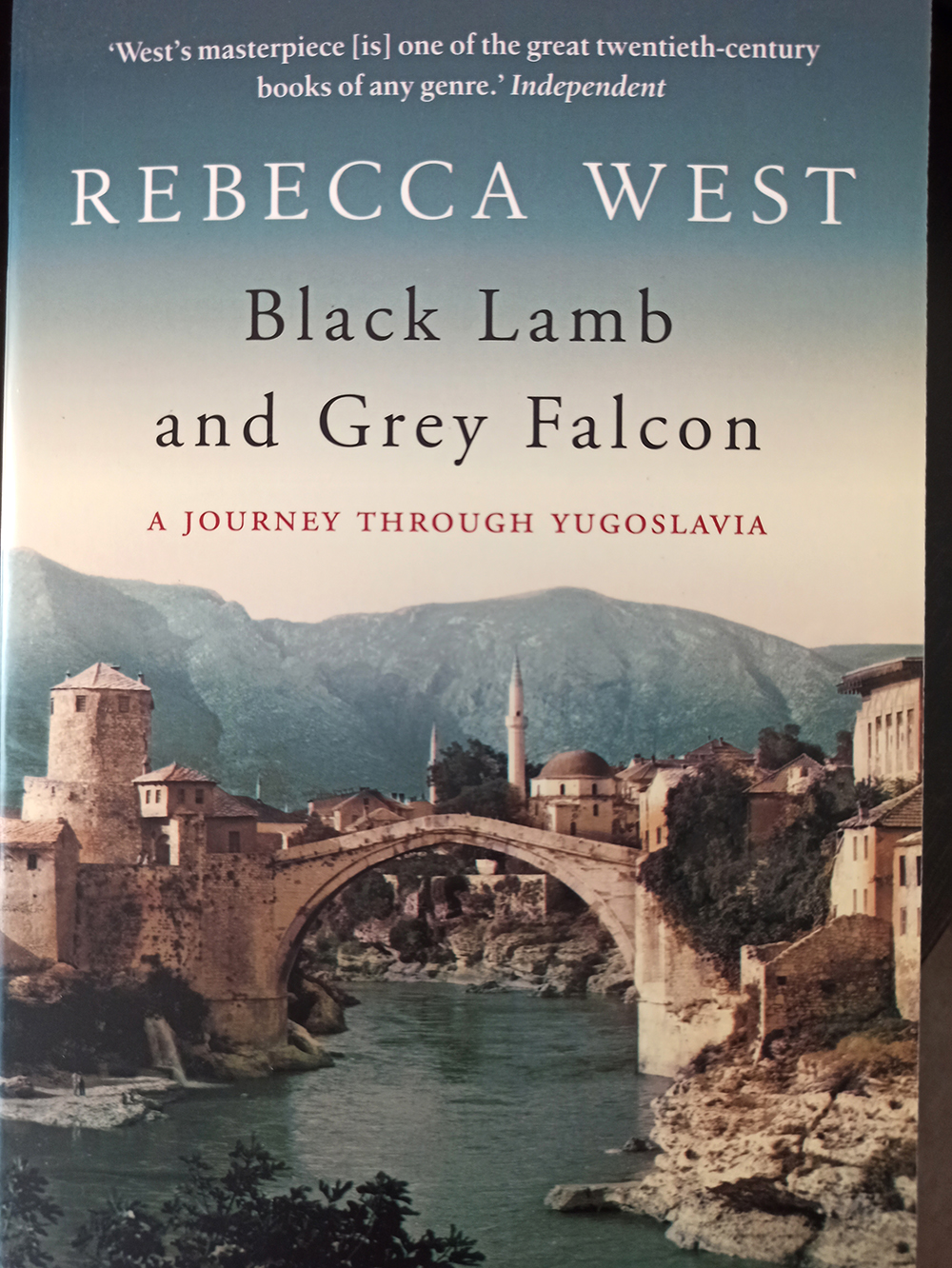
Black Lamb and Grey Falcon by Rebecca West (Photo: Paul Stafford for TravelMag.com)
Border (2017) – Kapka Kassabova
Beautifully written and layered with a real sense of atmosphere, Kassabova’s haunting Border is one of the standout pieces of travel writing to be published in the last decade. Eastern Europe is one of the least explored regions of the world in travel literature. Owing perhaps in part to the secrecy and legacy of distrust brought about by the Cold War, even those who have travelled through as part of longer journeys (Paul Theroux in Pillars of Hercules or Bill Bryson in Neither Here Nor There ) scarcely shed any real light on the region. Here, Kassabova heads back to the nation of her birth (Bulgaria) to explore the fragments of political ideology, faith and race, and the blurred lines between them, that have developed around the border region separating Bulgaria from Greece and Turkey.
Publisher: Granta Books, Buy at Amazon.com
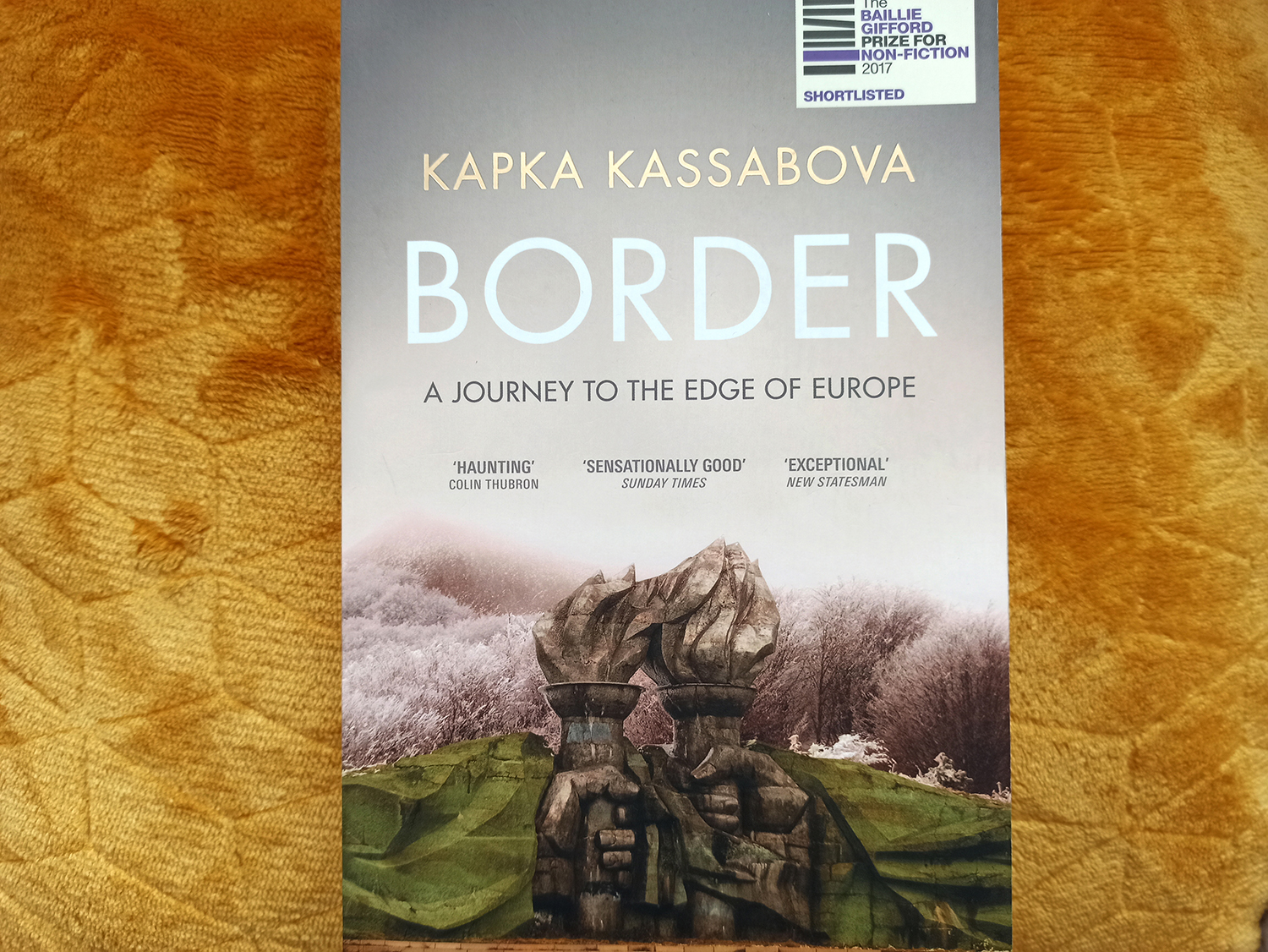
Border by Kapka Kasabova (Photo: Paul Stafford for TravelMag.com)
Down and Out in Paris and London (1933) – George Orwell
While much of travel literature is concerned with the voyage and seeking out the miraculous, the unique and the lesser known, Orwell took another route entirely. Down and Out in Paris and London does exactly what it says on the tin. It is a memoir of impoverished living in two of the world’s great cities, at a time when they were global beacons in terms of both power and culture. Not only does this book, in a very prescient move, eschew the superior tone of academia when examining the other, it also avoids all glamour in those cities, focussing entirely on the poor, the meek and the desperate. In Paris he lives on the edge of eviction, working the kitchens of a fancy establishment, while in London he lives the life of a tramp, moving from one bunkhouse and soup kitchen to the next, living day to day. It is to travel writing what the ‘method’ is to acting.
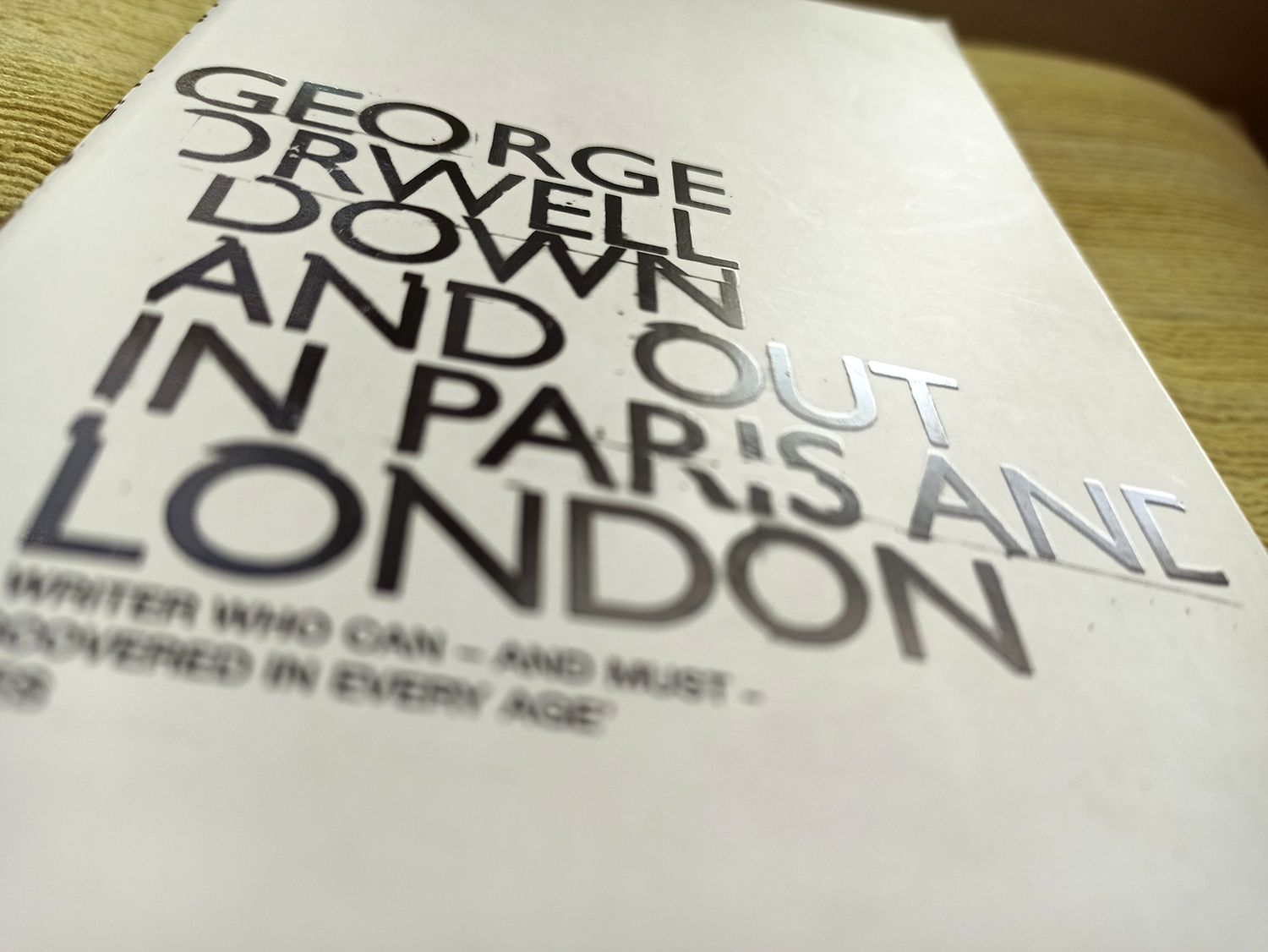
Down and Out in Paris and London by George Orwell (Photo: Paul Stafford for TravelMag.com)
Fear and Loathing in Las Vegas (1972) – Hunter S. Thompson
The outlier on this list (all good lists need one) is Hunter S. Thompson’s delightfully absurd, occasionally apocryphal and downright debauched novel Fear and Loathing in Las Vegas . In it, he created a new way of writing known as gonzo journalism, a style of storytelling which is found most commonly today in some documentaries, where the lines of fact and fiction become blurred and with the journalist placed as a central character in the story. This brilliant commentary on the flexible and inconsistent nature of truth was perfectly epitomised by the increasingly hallucinogenic recollections of protagonist Raoul Duke and Dr. Gonzo. The road trip to Las Vegas ultimately casts important light on an American society gripped by racism and violence (partly why the story is still so powerful today is that America hasn’t yet learned to grow up). As such it remains one of the most intriguing snapshots of America out there, surpassing the work of many strait-laced travel narratives in the process.
Publisher: Random House Inc., Buy at Amazon.com
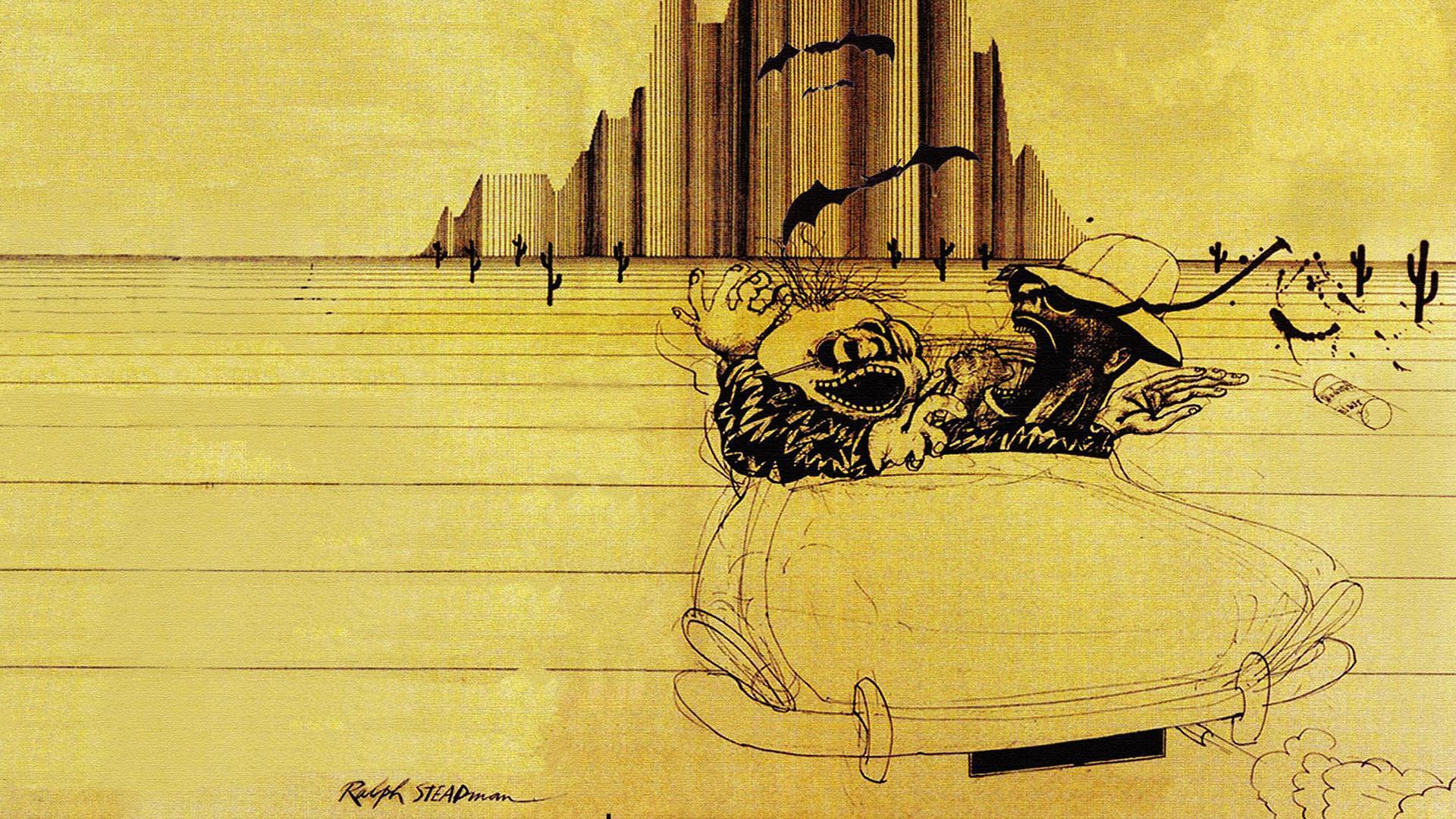
Fear and Loathing in Las Vegas by Hunter S. Thompson (Photo: Mathieu Croisetière via Flickr / CC BY-SA 2.0)
The Great Railway Bazaar: By Train Through Asia (1975) – Paul Theroux
A perfect example of how gonzo journalism began to seep into travel literature comes from what is arguably the most important modern travelogue: The Great Railway Bazaar . In it, Theroux travels from London all the way to Southeast Asia and Japan, via India, then back to Europe via Russia’s Trans-Siberian railway. While Theroux upholds elements of the old school travel narrative – like the scholarly, studious approach and the inquisitive air – his journey by train is as much about the growing backpacker, hippie, trail and the western counterculture that encouraged it. Occasionally the line between fact and fiction is blurred in his writing, but only to better convey his interactions with the people he met. As such, you get a fascinating look at what could be called modern colonialism, whereby the train networks that were often built by colonial rulers in non-European nations across the world, like India and Burma, were now being used by a new generation in the post-colonial era to explore these newly-sovereign nations.
In Patagonia (1977) – Bruce Chatwin
Coming hot on the tail of Theroux’s above book is perhaps the most popular and enduring travel book of all time: In Patagonia . Bruce Chatwin starts it off with a direct nod to writing and journalism’s slide into apocrypha by framing his trip loosely around the search for remains of a “brontosaurus” found in a Patagonian cave, which he first found languishing in his grandparent’s house. The doubtful story behind this find sets him on a road where he aim to unravel various other mysteries whose only connection is geographical, including the final resting place of Butch Cassady and the Sundance Kid, in the wild, empty spaces of South America. It’s a brilliant book formed of loose sections that don’t directly link to one another but has greatly influenced modern travel literature today.
Publisher: Vintage Classics, Buy at Amazon.com
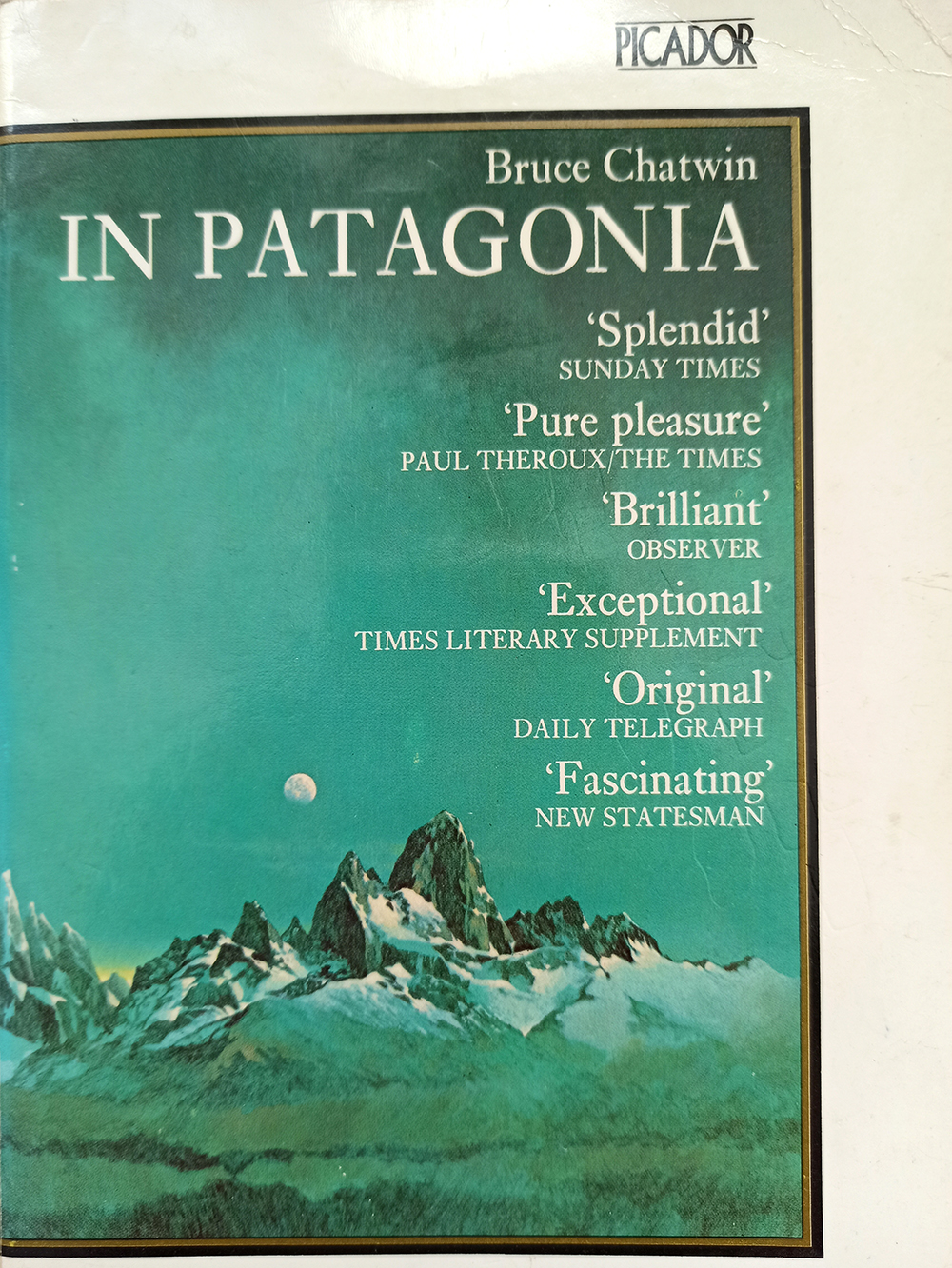
In Patagonia by Bruce Chatwin (Photo: Paul Stafford for TravelMag.com)
In Xanadu (1989) – William Dalrymple
One of the travel writers greatly influenced by Chatwin was William Dalrymple, whose own quest for his first book, In Xanadu , was framed as a search for the fabled palace of Kublai Khan, Xanadu. This type of narrative has always proven to be a ready source of inspiration for some of the better modern travel books; searching for answers to popular mysteries. It has a journalistic bent to it, and manages to sidestep the awkwardness of westerners merely travelling abroad and casting aspersions about the people and cultures they encounter through an imperial gaze, as is the criticism often lodged again some of the earlier works of travel writing. Here, Dalrymple follows in the footsteps of Marco Polo (following footsteps of somebody famous is also a common trope of travel literature) to find the palace. While Dalrymple restores elements of the scholarly, learned approach common to writers like Robert Byron and Paddy Leigh Fermor, you can feel the impact of those 70s writers as well.
Publisher: Flamingo, Buy at Amazon.com
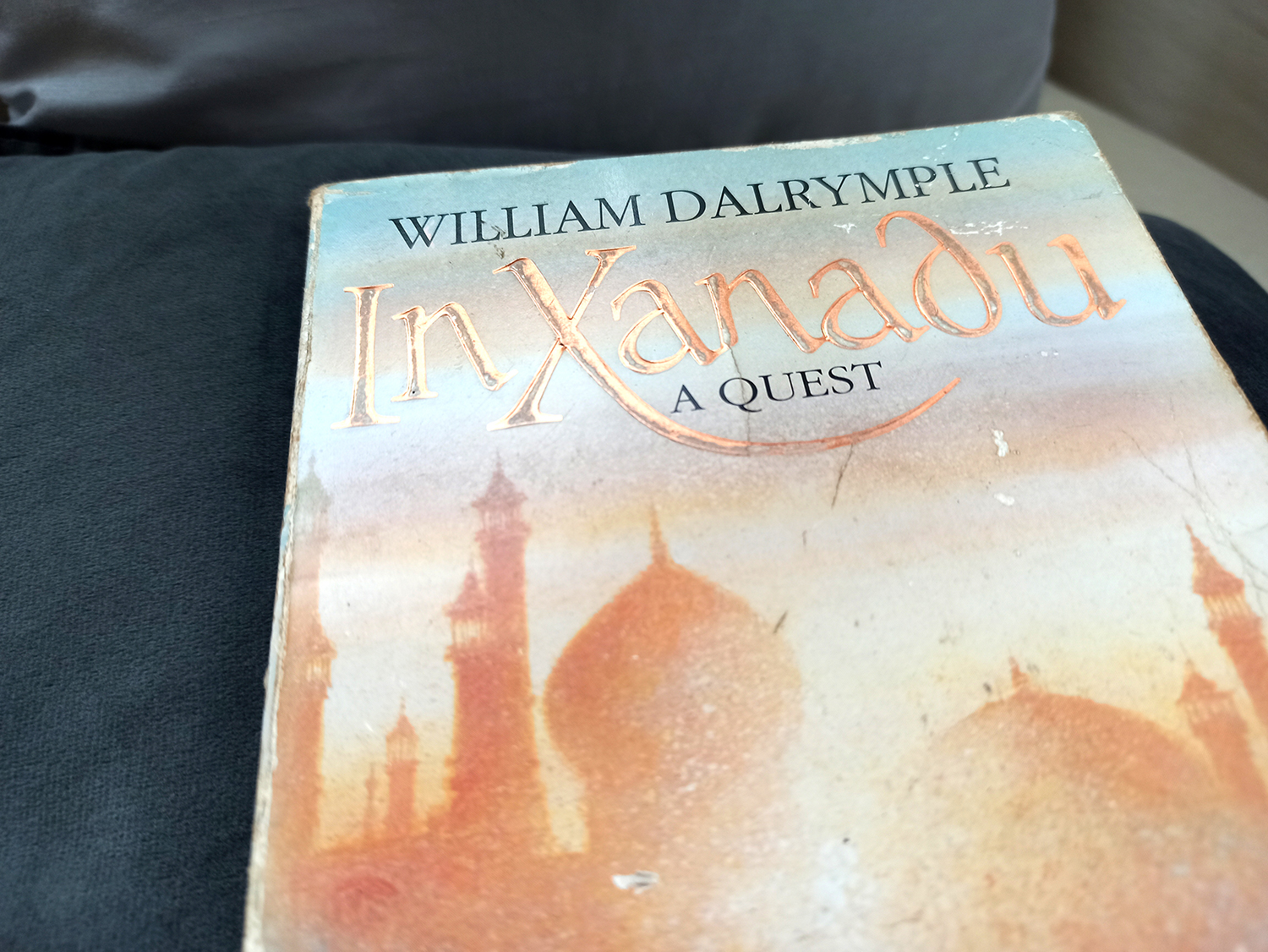
In Xanadu by William Dalrymple (Photo: Paul Stafford for TravelMag.com)
Into the Wild (1996) – Jon Krakauer
Few gripping travel narratives manage to capture the why? of our impulse to roam quite like Jon Krakauer does in Into the Wild . The book is both harrowing and revelatory, while performing a third-person character study on a young man he never actually met. In 1992 Chris McCandless walked into the Alaskan wilderness and never came back out. The book tries to examine what had led him there in the first place, whether he’d intended to return at all, and why he wasn’t the first to try and cut all ties with modern society. Krakauer looks to others, such as Henry David Thoreau ( Walden is the original escape from society book and a must-read for anybody fascinated by this subject), who successfully parted from the rat race, as well as the reasons McCandless initially fled from well-to-do family life years before and never contacted them again in his search for something more profound and meaningful. While most readers may disagree with McCandless’s methods, his motives seem far more familiar and relatable.
Publisher: Pan Macmillan, Buy at Amazon.com
The Living Mountain (1977) – Nan Shepherd
Perhaps one of the finest pieces of nature writing ever committed to paper is The Living Mountain by Nan Shepherd. Sadly, it’s also one of the most underrated books. The research for her book was undertaken in and around 1942, during the Second World War, which didn’t trouble the wilds of Scotland too badly. Here, the stark beauty of the Cairngorms seems to mirror the harsh reality of war. But Shepherd’s deep examination of the various microcosms of life that thrive on the region’s mountains is really a poem that exalts life. It’s a celebration of survival and endurance. Her wonderful book almost never made it to print, lying in a drawer for decades until a friend read it and encouraged her to seek out a publisher. We’re lucky it did.
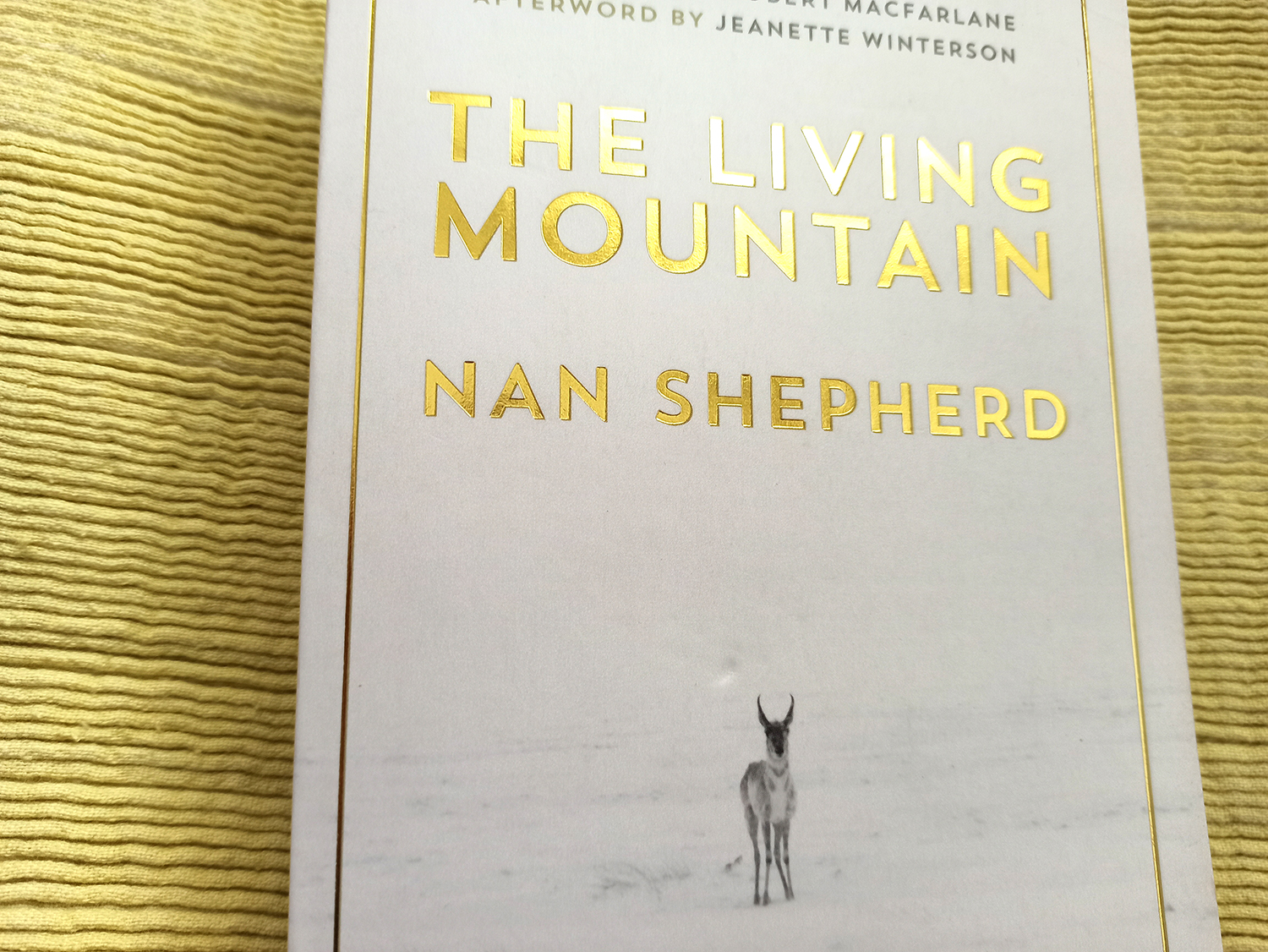
The Living Mountain by Nan Shepherd (Photo: Paul Stafford for TravelMag.com)
The Motorcycle Diaries (1992) – Che Guevara
Even if Che Guevara never became the revolutionary and icon of a generation that he did, The Motorcycle Diaries is a fascinating first-person account of travel’s capacity to broaden the mind. The young medic Ernesto ‘Che’ Guevara sets out from his home in Buenos Aires with his friend Alberto Granado sharing a motorcycle ‘La Poderosa’ and in his pointed recollections, you can almost feel Che’s ideological shift. He sees poverty and pain and beauty in the poor communities they visit, and through this, we learn a lot about how Guevara became a key player in the Cuban Revolution. But it’s also a beautiful rumination about the paths we take in life and the importance of curiosity.
Publisher: Perennial, Buy at Amazon.com
Notes from a Small Island (1995) – Bill Bryson
You can’t really write a top travel literature list and omit Bill Bryson. He’s one of the finest travel writers still producing books. Notes from a Small Island is particularly intriguing because, while most of the books that make any top travel literature list tend to be written by Brits, this is a book about Britain, written by an American. And it’s a delightfully observed book at that, pinpointing the eccentricities and unusual aspects of the island nation that most Brits would never think twice about, but when seen through foreign eyes suddenly become absurd. Bryson is especially gifted at making even the most mundane things seem funny. His books neatly balance thorough research and scholarship with humour and keen observation, effectively amalgamating all of the key aspects of travel literature into one inimitable style.
Publisher: Black Swan, Buy at Amazon.com
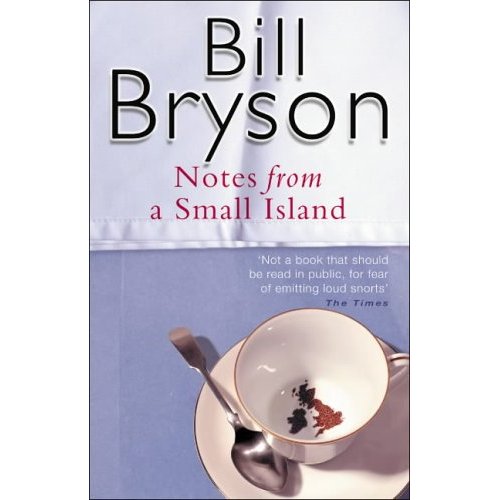
Notes from a Small Island by Bill Bryson (Photo: Wolf Gang via Flickr / CC BY-SA 2.0)
On the Road (1957) – Jack Kerouac
Before modern travel literature’s more self-aware phase that started in the 1970s, we had what essentially kick-started the great 20 th -century American cultural upheaval: The Beat Movement. Kerouac was writing about sexual promiscuity, wanton drug use and giving the establishment the middle finger way before it was cool to do so. Well-educated and moving in New York’s literary circles, Kerouac’s thinly-veiled characters in On the Road (substituting Old Bull Lee for William S. Burroughs, Dean Moriarty for Neal Cassady, Carlo Marx for Allen Ginsberg, and Sal Paradise for himself) are painted into a quasi-fictional account of his cross-country jaunts in the late 1940s. The post-war world was much-changed; the white picket fence America with its Jim Crow segregation and uptight Bible-belt hypocrisy were no longer acceptable. Around the same time, J.D. Salinger was branding it phoney, while Kerouac was realising this in his own way, by embracing escapism and drugs. On the Road still resonates today; both the book and the Beats gave licence to a generation of youths to question the oppressive system that became all too obvious in the 60s.
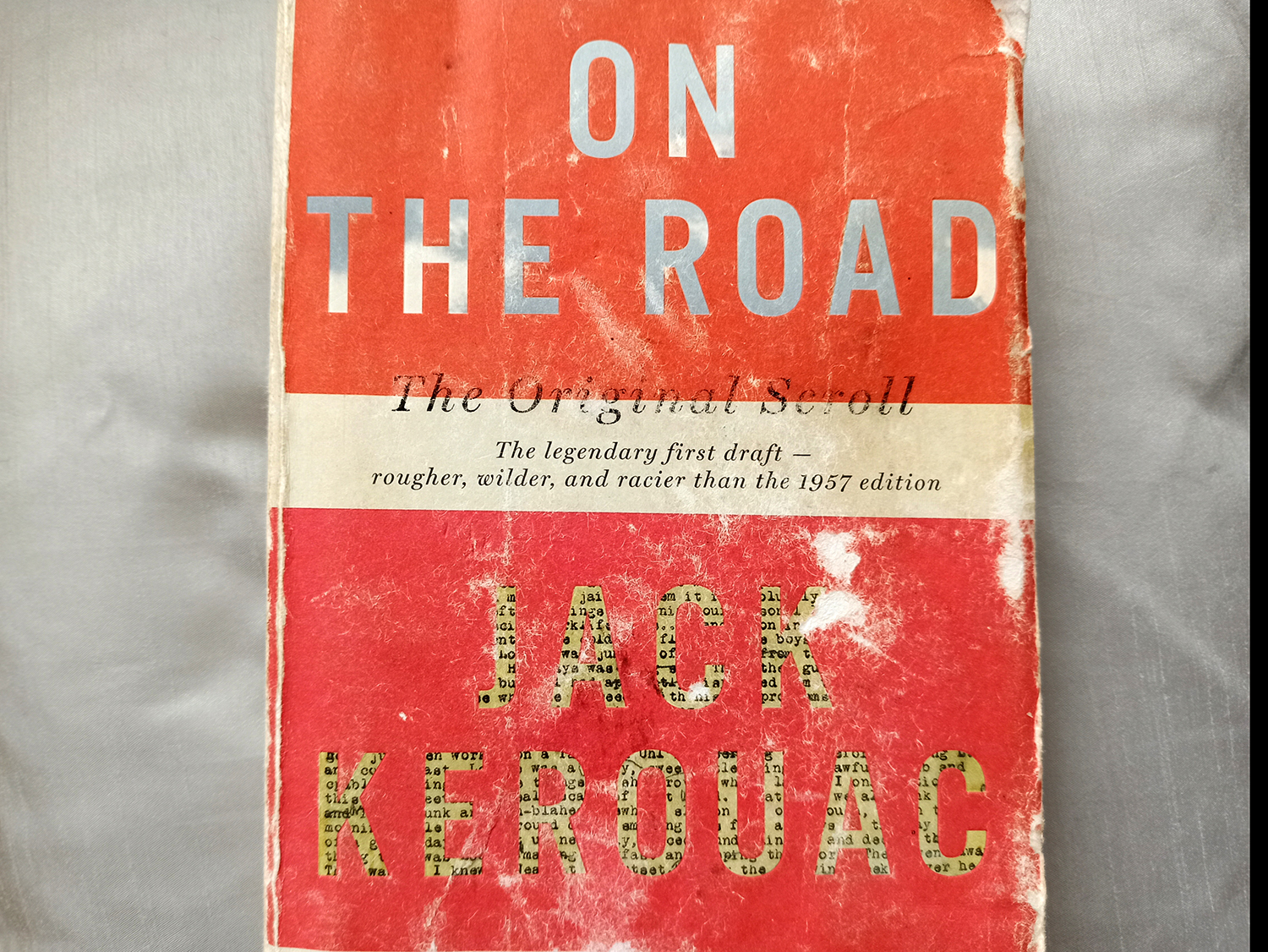
On The Road by Jack Kerouac (Photo: Paul Stafford for TravelMag.com)
The Road to Oxiana (1937) – Robert Byron
Much of the Afghanistan and Iran of Byron’s writing has disappeared, making the precision of his prose all the more valuable. The Road to Oxiana has all the classic elements of earlier travel narratives in it, scholarship, keen observation but also the kind of humour and casual presentation that would become far more popular in the writing styles common to the latter half of the 20 th century. Byron’s constant use of Marjoribanks to replace the name of the Persian ruler of the time was designed to evade censure or punishment in case his notebooks were confiscated and read. The humour of this rebelliousness is not lost when read today, even if some of his style may feel a little bit dated now. His architectural descriptions may be among some of the finest in all of travel literature.
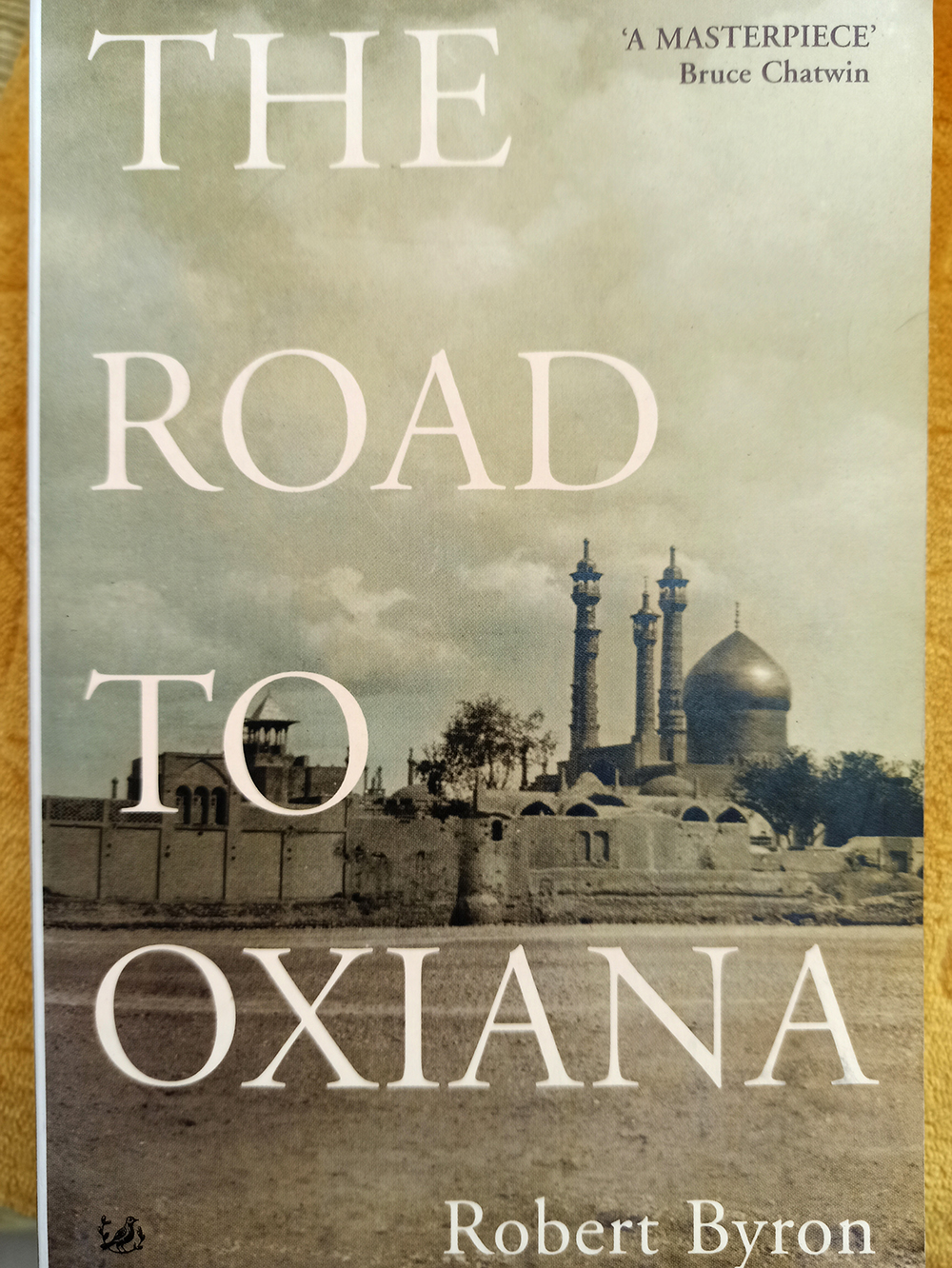
The Road to Oxiana by Robert Byron (Photo: Paul Stafford for TravelMag.com)
Rome and a Villa (1952) – Eleanor Clark
Because the majority of travel writing is crafted around a voyage or quest of some sort, we expect the movement to transcend places, countries even. What Clark does exceptionally well in Rome and a Villa is offer an in-depth depiction of just one city: Rome. This book, although not particularly tied to or crafted around any one specific idea, offers a deeper understanding of The Eternal City based on Clark’s explorations, often on foot. Indeed, her scholarly treatment of the Italian capital brings the city’s rich, storied past to life in imaginative and illuminating ways that offer fresh insight on a place that we may easily think has already been well covered already. Which goes to show that places change with the times offering an opportunity for fresh perspectives. There’s nowhere that is dull or too well-known in travel writing if handled by the right scribe.
Publisher: Harper Perennial, Buy at Amazon.com
Shadow of the Silk Road (2007) – Colin Thubron
Colin Thubron’s fascination with worlds that are ostensibly closed off to westerners has often led him into places that many others wouldn’t think to go. He visited China before it had opened up to the world, and the same goes for Soviet Russia. In Shadow of the Silk Road Thubron exhibits why his books are perhaps the most masterfully crafted of all contemporary travel literature. His pacing and descriptive writing are exquisite, particularly in this book, in which he journeys from Xi’an to Antakya in Turkey following the old ways, through Central Asia, once known as the Silk Road. The worlds he uncovers and the people he meets are painstakingly woven into a rich text, much like a hand-woven Persian rug, that is one of the most evocative pieces of travel writing out there.
Publisher: Vintage, Buy at Amazon.com
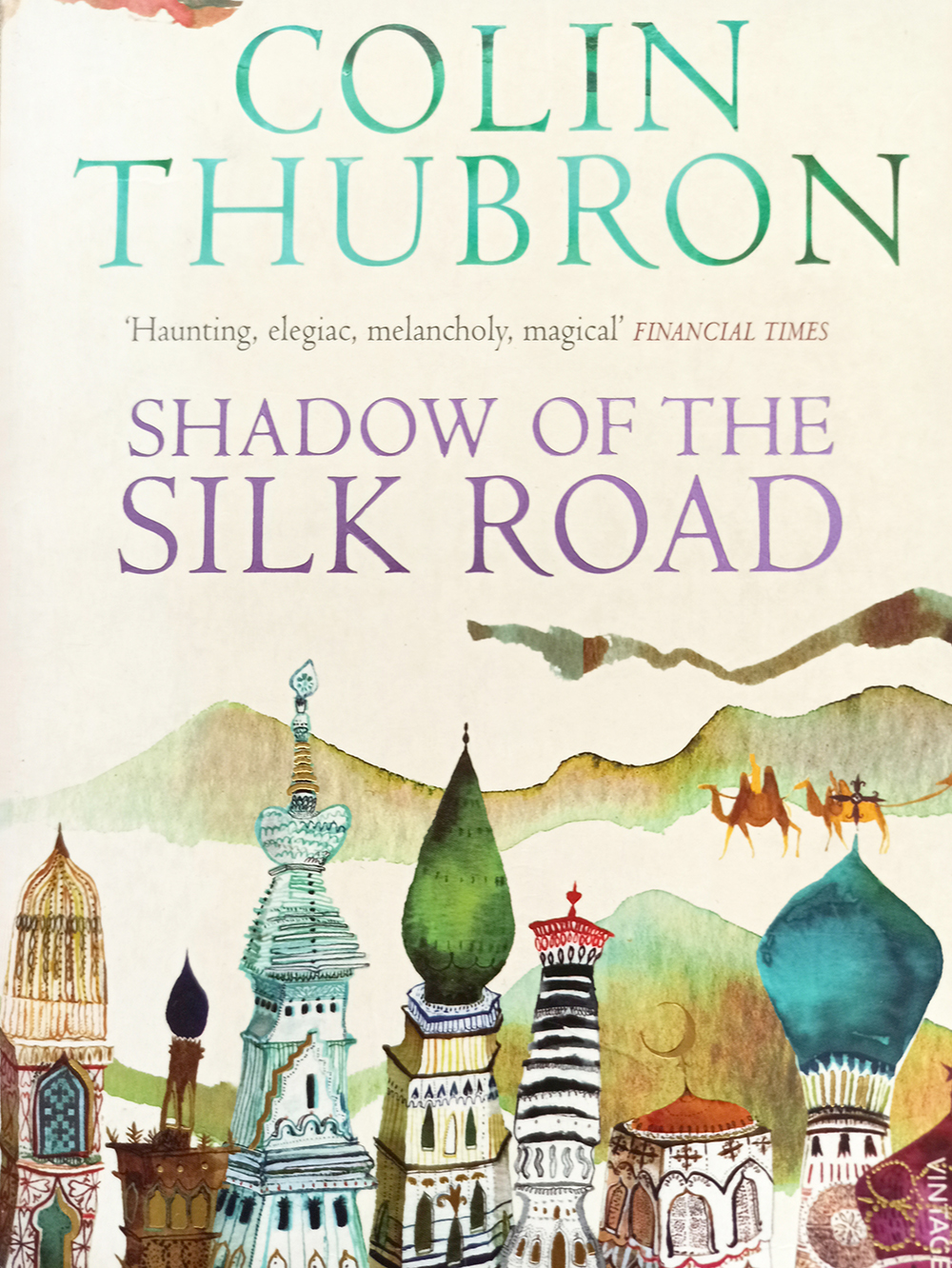
Shadow of the Silk Road by Colin Thubron (Photo: Paul Stafford for TravelMag.com)
Travels with Myself and Another (1979) – Martha Gellhorn
Even if Martha Gellhorn was writing today, she would rightly be upheld as one of the great journalists, but given that she was doing it decades ago, often better than her counterparts in a male-dominated field, is even more remarkable. The ‘Another’ that accompanies Gellhorn through much of the book was her former husband Ernest Hemingway, but the book also includes memoir from Africa in which she voyages solo. The book is presented as a collection of essays, a format that has become increasingly common in travel writing and which effectively allows the book to focus on more than one topic. Gellhorn’s writing includes keen observation, lively wit and a really sharp political outlook.
Publisher: Eland Publishing Ltd., Buy at Amazon.com
The Valleys of the Assassins (1934) – Freya Stark
Stark was an incredible human being. Fluent in numerous languages, including Farsi, she travelled the world often alone at a time when even men undertaking such journeys were considered intrepid. Stark was particularly drawn to the Middle East and was able to recount the stories of the women there, living in devout Muslim communities, in a way no man would ever have been able to do. She also discovered regions that had not been explored by Westerners before, including the Valley of the Assassins, which forms the basis of this eponymous book, receiving the Royal Geographical Society’s prestigious Back Award in the process. She continued to write books well into her 90s (releasing work over six decades) and died in Italy at the age of 100.
Publisher: Modern Library Inc., Buy at Amazon.com
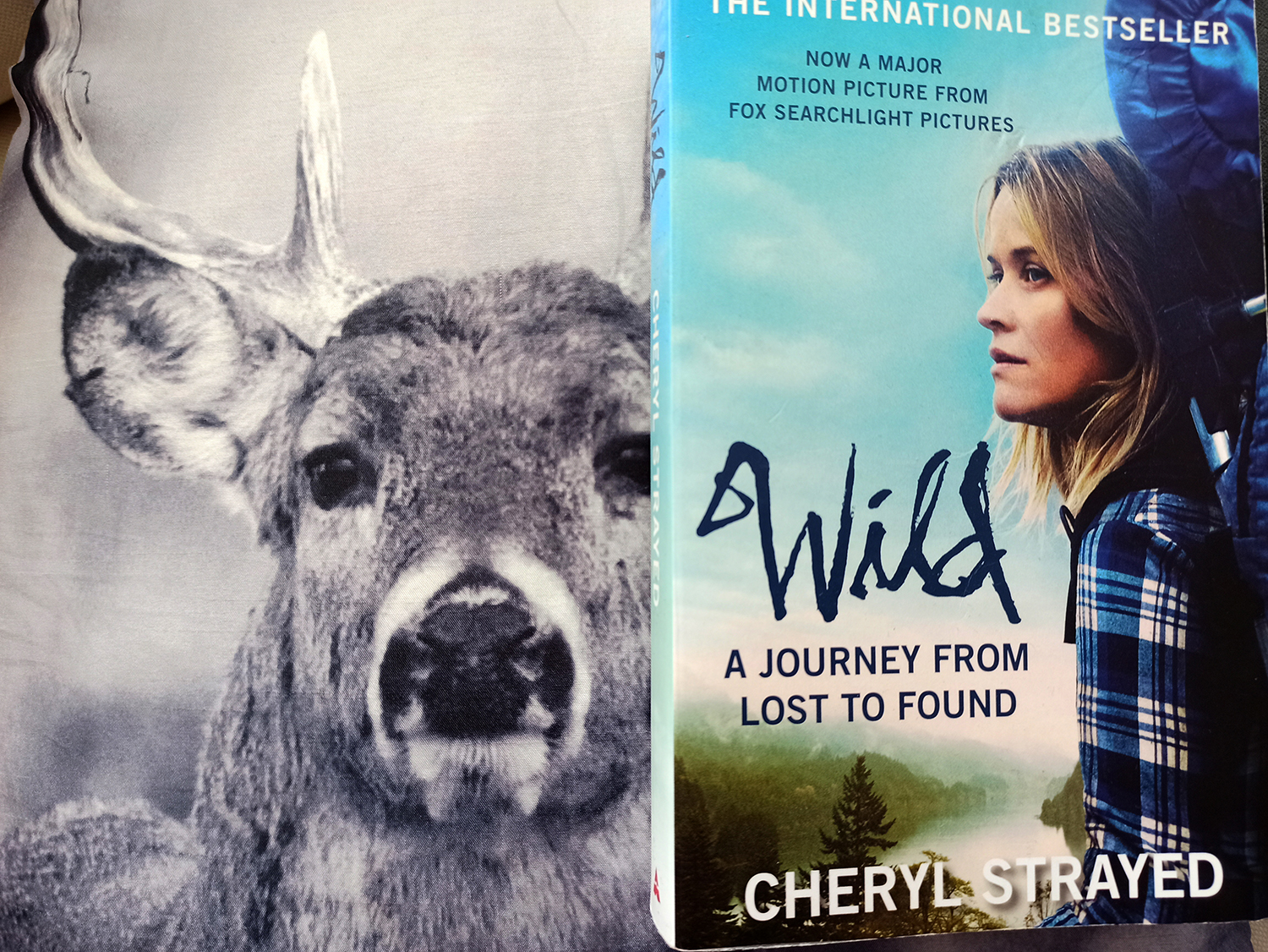
Wild by Cheryl Strayed (Photo: Paul Stafford for TravelMag.com)
Wild: From Lost to Found on the Pacific Crest Trail (2012) – Cheryl Strayed
Some may question this popular book’s inclusion on a list of the all-time greats, but it really has all the ingredients of a classic exploration of the human psyche. The physical duress that Strayed experienced on her hike of the Pacific Crest Trail (which runs from California’s border with Mexico to Washington’s border with Canada), and the gradual loss of her toenails as a result, is depicted with visceral precision. Her self-inflicted pain mirrors the mental health and dependency issues that plagued her before embarking on the feat, and in the process, we discover the restorative power of travel, of meeting new people and of forcing ourselves to step beyond our comfortably-positioned boundaries. Like any good travel literature, this book sheds light on why travel is so addictive, powerful and pertinent. Just like all the other books on this list, you’ll finish it wanting to plan your next trip.
Publisher: Atlantic Books, Buy at Amazon.com
How to Write a Perfect Travel Guide From Home
For many aspiring bloggers, writing about travel seems daunting because they don’t yet have extensive travel experiences. However, lots of travel experience is not necessary, as today one can easily make a travel guide from the comfort of their home. In this post, we’ll define what is a travel guide book or travel post, what sections you should include, and how to monetize your guide with affiliate links.

To monetize the travel guide using partner links, join the Travelpayouts partnership platform . Here you can find the travel affiliate programs of many popular travel brands, such as Booking.com, TripAdvisor, GetYourGuide, etc.
By promoting travel brands, you help your audience save money on travel and, as a result, travel more. In addition, you can turn your hobby into income. Signing up only takes a couple of minutes and you can start integrating partner link in relevant pages of your guide. You’ll earn every time a user follows your link and purchases a service.
Monetize your project with Travelpayouts, embark on a new journey, and create inspiring content for your audience.
Join the Travelpayouts Partnership Platform
Access exclusive tools and the best travel partner programs, including flights, hotels, car rental, insurance, tours and activities, all in one place.
Can You Write a Travel Guide From Home?
Naturally, writing travel guides based on your own experiences and illustrating them with your own photos is much easier and more authentic than writing about a destination you have never visited, although it is not always possible or even necessary to do so. With such a large selection of travel posts on the Internet today, you can easily create a detailed travel blog without ever leaving your home.
In this article, we’ve prepared some travel guide writing tips and a template to help you create useful blog materials. To make your posts even more appealing, explore travel guides created by locals who have a deep knowledge of your selected destination. Of course, be sure to double-check all the information that you share.
Choose a Destination
The first step towards writing a travel guide is selecting a destination. You may choose any location from the world’s most-visited cities, such as New York or Paris, to small idyllic villages. Just remember that your writing will largely depend on this initial choice. As there are already tons of guides about popular destinations, you’ll probably have to find a fresh perspective to make your materials stand out. When it comes to lesser-known spots, it will likely be easier to draw the attention of your audience.
While writing a guidebook, make sure to check with locals who know your destination inside out and can share invaluable advice. Try to connect with them through platforms such as CouchSurfing.org or Facebook.com . Ask them questions or ask them to check over your guide.
Use Travel Guide Structure
While the style of travel guides varies widely, most of them have a similar structure, which consists of tips on transportation, accommodation, tours, activities, popular sites, travel costs, and so on. Make sure to include these sections in your article so that it presents all the information that readers are looking for.
1. How to Get There
Normally, travel guides present several options for getting to each destination, including which cities are nearby, which modes of transportation are available, and the price of those transportation options.
Also, you can offer some tips and tricks on how to plan a trip more efficiently. For example, in some cases, it’s cheaper to take a plane, while, in other cases, ground transportation is a better option. You can also share some money-saving tricks.
2. Accommodations
Today, there are plenty of ways to arrange accommodations in any destination. You can start by suggesting a hotel or hostel via Booking.com , which many tourists are familiar with or have already used. You can then offer to rent places to stay with locals through platforms like Airbnb or HomeAway .
At this point, you can also offer tricks to save money. In some popular locations, such as Barcelona, it is usually cheaper to rent accommodations in the nearest town instead of within the city itself, while, in other destinations, like Paris, choosing the right town while avoiding marginalized areas can be far trickier. Be sure to carefully research the destination and offer valuable advice.
3. Tours and Attractions
After learning about their transportation and accommodation options and costs, tourists will want to explore their destination’s sights and entertainment opportunities. In this section, you can create a list of attractions to visit and excursions that will make sightseeing more exciting. Include options from walking tours to bus excursions to boat trips. For inspiration, look through the Experiences section on Airbnb.com .
4. Getting Around
Another important topic to cover is transportation options within the destination. For example, the first thing travelers would like to know is how to get from the airport/railway/bus station to the city center. There are usually dozens of transportation methods and the price differences between them can be massive, so your readers will appreciate such advice.
It is also important to describe different methods of getting from the transportation hubs to the main attractions while offering options to save a few bucks. In this section, it might be a great idea to ask locals to share tricks. For example, in Lisbon, taxis are often the same price as public transportation or lower.
5. Travel Costs
This is one of the most important parts of any travel guide, as travel costs greatly influence booking intent. Thus, you should briefly cover the prices of flight tickets, accommodations, tours, food and drink options, public transport insurance, and other relevant travel products. Also, for budget travelers, provide tips on how to save money or find the best value.
6. Staying Safe
In this section, you can cover concerns that tourists might have about security. Different cities and areas have different regulations and concerns, so make sure to do the proper research and possibly even ask locals for advice.
So, which questions and concerns should you cover? Consider topics like: where to park a car or exchange money, what areas are best to avoid, are there many pickpockets, and so on.
7. Best Time to Visit
Each destination offers different experiences to travelers at different times of the year. For example, Japan is famous for its cherry blossoms, so it’s worth mentioning the best time to catch them in bloom. European destinations are especially beautiful during the winter holidays thanks to their abundance of Christmas markets and celebrations.
You can recommend the best season to visit each place or offer specific advice for different times of the year.
8. Food and Drinks
In this section, you can describe features of the local cuisine and recommend popular dishes. Then, suggest specific restaurants, markets, or shops with high ratings and positive reviews. To get inspired, check Google Maps , TripAdvisor , or Instagram .
It’s worth mentioning food markets, as they usually have local treats and a wide variety of products at low prices, such as La Boqueria in Barcelona.
How to Write a Travel Guide: Best Practices
Below, you’ll find the best practices for travel writing that will help you make your guides appealing, valuable, and easy to monetize.
1. Add Pictures
Using schemes or images for travel guides is beneficial for many reasons. Posts with pictures receive over 90% more views than ones with plain text. Images help break posts into small parts and make them easier to digest. Readers retain more information and remain interested for a longer time if the text is paired with an image. In addition, 90% of the information that the brain receives is from visual cues.
Thus, make sure to illustrate your post with a few appealing photos to help the audience get inspired. You can also add maps or schemes so that readers can better navigate in the destination, as well as other image types to make the content more illustrative and versatile.
Where to find photos? You can buy photos at photo banks or download free stock images . Moreover, if you stumble upon a nice picture on social media, consider contacting its owner and ask for permission to use it on your site. Another option is to download a stock photo and edit it with one of the free design apps to make it look original. In any case, try choosing only high-quality, unique photos to make your blog look professional.
2. Research Keywords
Keywords are important in terms of website promotion. If you want to drive more traffic from search engines, be sure to run keyword research for your niche . To automate the process, try dedicated tools like Google Keyword Planner and Keywordtool.io (free tools) or SEMrush and Ahrefs (paid programs).
Then, it’s equally important to use keywords properly . That is, find the best placement within the text so that they attract attention and help navigate the text. Also, follow keyword density best practices so that your post doesn’t look spammy. And try to use keyword variations to enrich the text and drive more traffic.
Keywords differ widely: they can be short-tail or long-tail, short-term or long-term, high volume or low volume, geo-targeting, LSI, and more. Some keywords have higher competition, such as short-tail, high-volume keywords, thus aspiring bloggers might find it extremely difficult to compete with established sites. You can start with long-tail keywords and then work your way through the other types as you go.
More practical tips about SEO, including finding and using keywords, can be found in the free SEO course from Travelpayouts and Sharon Gourlay. Watch one lesson from the “Boost Travel Affiliate Revenue Using SEO” course to find out how many keywords you should use in your articles and how to search for them easily and quickly.
All Travelpayouts Academy courses are free for everyone. So feel free to view all the lessons that will help you increase your income.
3. Place Affiliate Tools
When writing a travel guide, don’t forget to insert an affiliate link, widget, banner, or other tools . This can help you monetize your guide and increase your ranking in the SERPs.
The most important thing is to add only relevant tools. For example, when describing sights, add a link to a tours and activities platform, such as Expedia or Musement, so that readers can book an excursion immediately. In the accommodations section, you can link to Booking.com, HomeAway, etc. Such an approach helps your readers easily find a solution to their problem or an answer to their question while generating additional income for you.
We recently published a more detailed guide on using affiliate links on our blog.
4. Choose the Right Format
There are plenty of formats available for travel guides. You can choose to make a post on your blog, a PDF guide, an eBook, and the list goes on.
If you plan on writing multiple guides for your blog, it makes sense to create a separate section and publish all the guides there. You can also create subsections for each country to facilitate better navigation.
To get more leads, you can even create city guides in PDF format and offer to send them for free in exchange for a users’ email address. This could help you grow the number of your subscribers.
If you are writing a travel guide covering multiple destinations, consider adding a table of contents so that readers can easily navigate.
Travel Guide Examples
It might be a good idea to find inspiration before you start writing. Check out a few travel blogs and if you like the structure, perspective, etc., why not adopt those elements for your blog and audience?
Here are a few good travel blogs to check out:
- AGAINSTtheCOMPASS
- Lost With Purpose
- THE Blonde ABROAD
- ROADS&KINGDOMS
- NOMADIC MAT
Also, be sure to check our list of the top travel blogs to follow in 2020 for more inspiration.
How to Create Online Travel Guides
You don’t need extensive travel experience to create your own travel guidebook or series of travel posts. Start by choosing a destination that will be interesting to your audience, think about the structure of your guide and the various aspects of travel, and perhaps ask locals for additional tips. Also, don’t forget to choose the right format, fill your text with keywords to reach a larger audience, and insert affiliate tools to start earning money immediately.
8 mins read
10 Travel Blog Writing Examples For Inspiration
Planning to be a travel writer? Don't start without looking at these 10 examples of exceptional travel writing! Plus, here's why you need a travel writing portfolio.

Shreya Bose
Written by Shreya Bose , edited by Protim Bhaumik , reviewed by Eric Hauch .
23. Feb 2023 , updated 30. Jun 2023

Nothing opens our minds quite like travel, does it? However, not all of us are lucky enough to travel more than once or twice a year (if that) while juggling a 9-5, school/housework, kids/pets, and everything else in between.
But there are certain people who actually choose to live a life of travel. No, I am not talking about trust fund babies but about the travel blogger.
Giving up the secure desk job to pursue travel stories, writing them, and getting paid is not the life for everybody. But I won't be lying if I say quite a few of us secretly (or not-so-secretly) wish we could live that life.
If you're thinking of embarking on a "job" that takes you around the world, and you think you can write travel blogs that delight and educate every reader, this article is for you. To get started, have a look at these 10 travel blog writing examples. The individuals discussed in this blog post are living the life you want, and exploring their work is a good way to start your travel writing career before building your unique voice and brand.
10 Amazing travel bloggers & their work (to inspire you to write your first blog)
Elizabeth chorney-booth.

Elizabeth Chorney-Booth is a Canadian writer exploring food, drink, travel, medical writing, and general interest topics. She is the weekly restaurant columnist for the Calgary Herald, a regular columnist on CBC Radio, and a weekly contributor to Canada.com 's travel section. Her work has appeared in multiple publications like the Globe and Mail, Culinaire, Bold Travel, Savour, Leap, OnBoard, and more.
Gwendolyn Richards

Gwendolyn Richards is a Calgary-based food and travel writer & photographer who loves patent shoes, bourbon, and burgers. She has also written and published a cookbook named Pucker. If you're looking to have travel adventures (of the stomach especially) in and around Calgary, her portfolio and blog are must-reads.
Jamie Carter

Jamie Carter combines travel blogging with writing about science, and his portfolio and blog showcase the coolest, most eclectic collection of articles and images you'll come across. His work has been published in Forbes, Travel+Leisure, Sky & Telescope, BBC Sky At Night, South China Morning Post, TechRadar, and WhenIsTheNextEclipse?
Jamie's blog: jamieacarter.com
Louise Goldsbury

Louise Goldsbury runs a famous travel blog that has won her the Best Travel Writer award at the National Travel Industry Awards twice. She has also been a 2022 finalist for the same. She writes as a freelance for The Australian, Escape, and Explore. She is also the Editor-at-large at Cruise & Travel magazine (Big Splash Media)
Louise's blog: louisegoldsbury.substack.com

Gina Rich is an award-winning freelance writer exploring topics around parenting, health, travel, and the natural world. She's also quite a coffee enthusiast, as her own travel blog will showcase.
Gina's blog: lovehopeandcoffee.com
Vicki Reeve

Vicki Reeve is a Cornwall/London-based freelance writer & editor who works on Departures International, Centurion, Compendium, and NetJets magazines, Vogue, Art Fund's Art Quarterly magazine, Elephant magazine, and Wylde (among others), and writes about Cornwall for the Mail on Sunday's travel section.
She is also a senior editor at Ultratravel magazine.
Salt in our Hair

Run by Hannah and Nick, two travel bloggers from the Netherlands, this award-winning blog has it all — travel stories, travel photography, travel tips, and even information for solo travelers.
By detailing their own travel adventures, Hannah and Nick provide helpful information and fun-laden itineraries for anyone looking to jet-set around the world.
This is a great travel blog example, encompassing everything from an adventure travel blog to laid-back travel ideas.
Hannah & Nick's blog: saltinourhair.com
The Blonde Abroad

Kiki has been traveling solo for years and collecting her experiences in her travel blog. She has visited over 70 countries and collates information specifically for solo female travelers. Of course, she also covers other categories like adventure travel, budget travel, couple travel, etc. But it's her tips for women traveling alone that really get her blog to stand out.
Kiki's blog: theblondeabroad.com
The Travel Book

Is it possible to travel while being environmentally conscious? The Travel Book says Yes!
It doesn't matter what your travel destination is, this blog will tell you how to have amazing trips without leaving too much of a negative impact on the ecology. This is a great resource if you're looking to travel internationally since those long plane rides are just the start of expanding our carbon footprint. Tips from Karoline and Rasmus (who run the blog) help you counteract that, without missing out on the most beautiful places on this planet.
Karoline and Rasmus' blog: thetravelbook.world
Be My Travel Muse
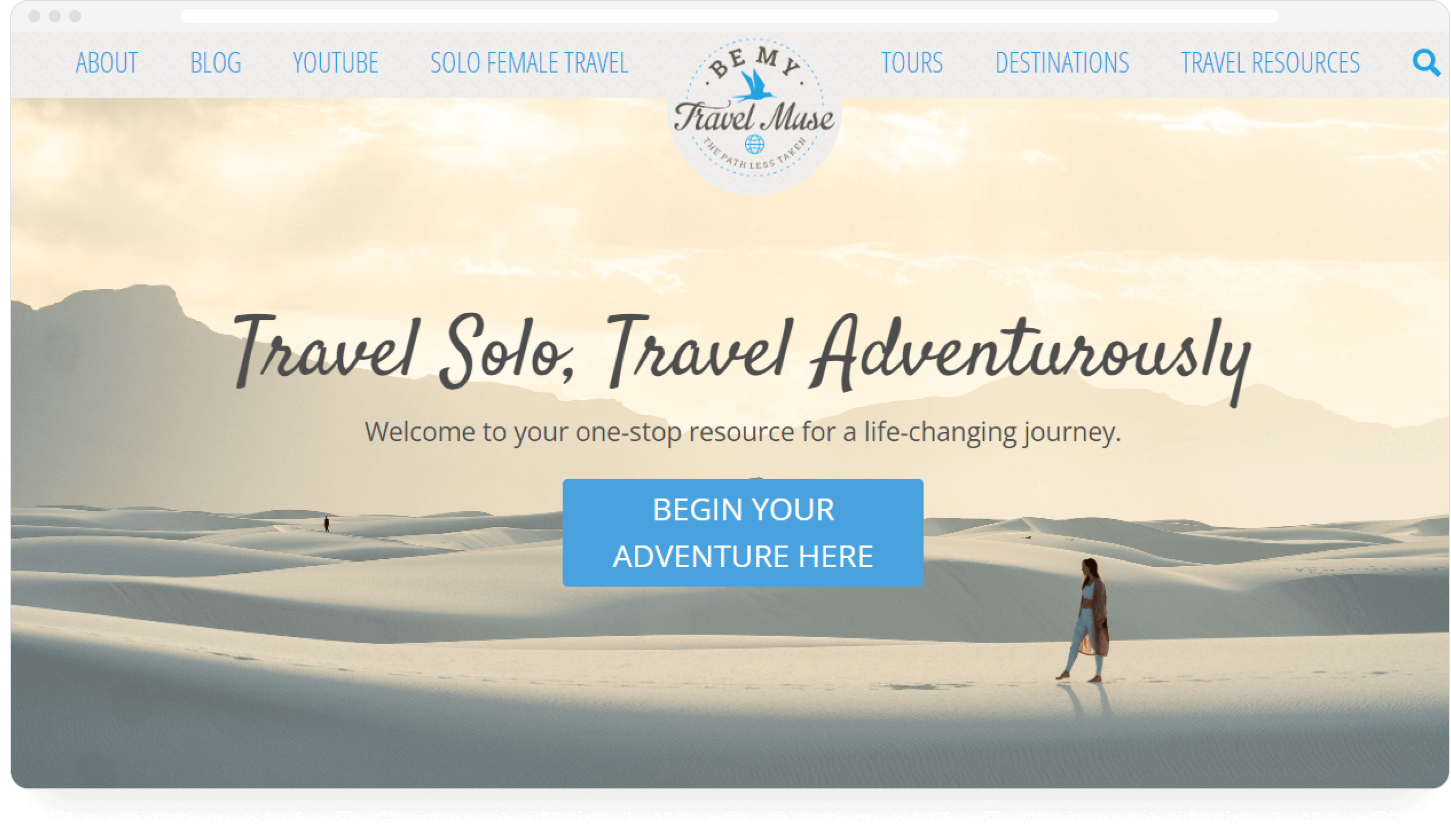
Much like Kiki, Kristin has also been traveling solo for over 9 years. Her tips about saving money and traveling safely without missing out on any adventures have led her blog to be one of the most popular ones in its niche. She attracts about five million readers per year, and I don't have to tell you how impressive that is.
Kristin's blog: bemytravelmuse.com
Now that you've seen some top-shelf travel blog writing examples, let's move on to a related question.
Are you planning to create a travel writing portfolio?
You've obviously noticed that the first few examples are portfolios rather than blogs. I included them on purpose because these portfolios actually provide a more comprehensive view of the writer's work at one glance than a blog would. In a blog, you'd have to click through different sections or scroll around to find actual articles.
In a portfolio, it's all right there on the front page. Moreover, if you're planning to write about travel for magazines, editorials, and other third-party publications, you need a portfolio. Clients usually don't have the patience to scan through your blog to find relevant articles. Additionally, if you're a professional writer of any kind, you're expected to have an updated portfolio that can be sent out in a second. Failure to meet this expectation immediately demotes you from their list of potential candidates.
Moreover, clients may not end up actually reading/viewing your best work if they are left to scroll by themselves. On the other hand, you can curate your portfolio so that your best work shows up first, and you get to your best professional foot forward.
Ok, so... how do I create a travel writing portfolio?
There are an overwhelming number of portfolio builders available today. You've probably already heard of some — Squarespace, WordPress, Clippings, etc. They're all excellent options, depending on your profession, requirement, and professional seniority.
Before creating my own writer portfolio, I went through quite a few of these tools before choosing Authory. I'm not saying you should choose it too (but you should if you're a writer), but just telling you why it stood out to me over the other, more established, name-brand portfolio makers .
- Automatic importing of ALL your bylined content from ANY digital source you enter. You enter the source website, and Authory finds all your bylined pieces and imports them into its database. You can import from an unlimited number of sources. Moreover, Authory won't just import all existing content from each source, but all pieces published in the future as well. You never have to copy-paste/manually upload any of your bylined pieces to your portfolio ever again. You can, of course, manually upload, non-bylined content if you want.
- All imported content is permanently backed up, in the ORIGINAL format (text/media) rather than screenshots.
- All imported content is downloadable as high-res PDFs or exportable as HTML files. No lock-in period.
- Multiple, low-effort customization options to make your portfolio visually appealing and easily navigable.
- Email notifications every time a new article is imported by Authory.
- In-built search engine optimization and responsive design so your portfolio looks good on mobile screens and shows up on search engine results.
- In-built analytics that provides real numbers on content performance (engagement, readership) across the web and popular social media sites every 30 days.
- Allows creation of newsletters with a couple of clicks. Post setup, Authory will automatically send your newly published content to subscribers.
- Widgets to display your portfolio on other sites, such as your personal website (if you have one).
If you're someone who reads reviews before making a purchase, I've got you covered. Check out these testimonials from Authory users:
today i've looked at 100+ applications for freelance writing projects. tons say something like, "I'm qualified but can't share my ghostwritten samples." just use @Authory to do this. hiring managers need to see your best samples! not an ad, just trying to make my life easier 😆 — Jimmy Daly (@jimmy_daly) February 15, 2023
Epic tool I recently discovered 👇 With @Authory , podcasters, influencers, journalists, businesses and personal brands can create a professional portfolio that highlights their best articles, stories, episodes and other written content including PR. https://t.co/LWXZFauvgR — Adel (@AdeldMeyer) February 15, 2023
I just started using @Authory , it looks great, let's you organize your content super easily and can automatically import all your pieces from the web. It also keeps a backup of everything in case one of your articles is ever taken down. ~8-10 bucks a month 🙌 — Historian turned techie👩🎓👩💻 (@christina_haaa) February 9, 2023
Emma Wilkinson
I do still love Authory - I do nothing just sit back and let it collate all my work (and tell me interesting things about stats etc) and I now have 1.4k articles on there 👍If you want a bit of a longer free trial to have a go yourself try this link https://t.co/IbHfEk3FDO https://t.co/RDYq2D8dKP — Emmajourno (@Emmajourno) February 7, 2023
Is it any wonder that Authory is chosen by 6X Emmy winner David Pogue , Steven Levy, Editor at Large, WIRED , Brian Fung, a Technology Reporter at CNN , and other industry stalwarts to create their portfolio?
Get started with Authory for free today!
Seasoned writer & editor working with B2B & B2C content since 2017. Writes about music on weekends. Trying to overcome caffeine addiction.
More articles
The ultimate guide to creating a successful writing portfolio.
Step-by-step guide to creating your writing portfolio. Tips, examples, and everything you need to make a writing portfolio clients will love!

Protim Bhaumik
over 1 year ago
10 Journo Portfolio Alternatives for 2024
A list of alternatives to Journo Portfolio that you can test out before building/upgrading your next incredible portfolio!
This Executive-Turned-Journalist Has Written for 54 Different Publications — Yet Keeps His Work Perfectly Organized
Howard M. Cohen has written for considerably more publications than the average journalist. That’s why finding a solution for how to present and protect his work has been vital for him.

over 3 years ago
After 300 Articles Vanished Into the Abyss, This Tech Writer Knew He Had to Find a Way to Protect His Work in the Future
Kane Fulton lost hundreds of articles when the publication he wrote for changed its CMS. His work was gone for good, and Kane immediately started looking for a solution to ensure this would never happen to him again.
Clippings Portfolio — Pros, Cons & Alternative
Does a Clippings portfolio work for you? Here's a detailed review of Clippings, a look at its pros & cons, and a look at Authory as an alternative.
about 1 year ago
Top 7 Contently Portfolio Alternatives: Contently Alternatives for Writers
Learn what the top 7 Contently portfolio alternatives are and which one you should choose to build your portfolio.
- Collections
- Journalists
- Content Marketers
- Thought Leaders
- Partner Program
- Writing Portfolio
- Journalism Portfolio
- Writing Backup
- Content Marketing Portfolio
- Social Media Portfolio
- Best Portfolio Builders
- Portfolio PDF Examples
- Twitter Archive
- Portfolio Creator

IMAGES
VIDEO
COMMENTS
Notable examples of travel writing. "Travels with Charley" by John Steinbeck. "On the Road" by Jack Kerouac. "In Patagonia" by Bruce Chatwin. "A Walk in the Woods" by Bill Bryson. "Eat, Pray, Love" by Elizabeth Gilbert. "Into the Wild" by Jon Krakauer. "The Great Railway Bazaar" by Paul Theroux. "The Motorcycle ...
11 Great Travel Writing Examples. Writing with feeling, tone, and point of view creates a compelling story. Below are examples of travel writing that include; first paragraphs, middle paragraphs, and final paragraphs for both travel articles as well as travel books. I hope the below examples of travel writing inspire you to write more, study ...
Tips for travel writing. Open with a compelling and snappy anecdote or description to hook the reader's interest from the beginning. Give the reader a strong sense of where you are through vivid language. Ground the reader in time, in climate, and in the season. Introduce yourself to help the reader identify with you and explain the reason ...
To kick your travel writing skills up a notch, here are five powerful ways you can start your narratives. I am also including examples from my own work to help guide your learning experience. Begin with a stressful situation. Example 1 - "The sound of tiny spikes on our wheels crunching through snow was the only sound we heard for miles."
Take detailed notes that include specific descriptors about what makes the place you're traveling to unique. 3. Be a good reader. To avoid common clichés and hone your own perspective, read other pieces of travel writing. Staying up-to-date on the latest trends and themes will help you craft new ideas. 4. Be honest.
When it comes to writing a book, you can take all the challenges about travel writing from above and magnify it times 2,000. If you're asking readers to commit to you for more than 100 pages, you'd best make sure that your book is worth their while. As far as examples go, travel writing's boomed in the mainstream book market recently.
2. Time travel. Taking readers back through historical moments is a great way to achieve more depth in your stories. In the story The Museum of Atari, Mario and Electronic Childhood Dreams, Channel News Asia uses Shorthand to create a stunning visual story about a little-known museum of retro video games in Singapore.
For now that everyone travels, writing travel books is a much more difficult business thatnit used to be, and while it's still fairly easy to write a travel book, to write a good travel book now takes real ingenuity. ... An example: in 1990 I went up to Simla to interview two old "stayers on" who had lived in Delhi in the 1930s and who ...
This travel writing guide could be your plane ticket to see the world. For many people, travel writing as a profession is just a dream. This guide shows how it can become a reality. Contributor to Outside Magazine and The New York Times, Tim Neville takes us through the process of travel writing, starting from the inception of an idea through ...
travel book - History of the Persian Wars. Although travel writing is ancient, it first began to garner attention in the 1980s. ... travel writing is a form of storytelling where a narrator explores a destination and shares their encounter through a piece of content. These tales of pursuits in far-flung corners of the
Susan Pohlman. Sep 9, 2010. A travel memoir is a travel writing genre all its own. It is not a guidebook, trip diary or marketing piece for the Sunday paper. Rather, it is a delicate mixture of recollection and reflection that reveals how a journey, or a series of journeys, transformed the writer. ( Why Every Writer Should Keep a Travel Journal .)
For travel blogs, that often means the writing should: Be written in first-person. Tell the story in the past tense. Be conversational in tone (dialogue can be useful here) Contain sensory details. Give the reader value in some way, whether that's providing useful tips for navigating or insight into a culture. Make it relatable to the audience.
There are several great writers you can look for motivation. Here are some personal favourites: Bill Bryson is a prolific travel writer with excellent humour and wit. His book, "A Walk in the Woods," is a perfect engaging travelogue. Paul Theroux is known for his deep cultural and historical insights.
Focus on the Meaning. The most important part of your travel memoir is the takeaway, or the moral of the story. This advice applies to any memoir, by the way. Creating a travel log of what happened and when it happened is boring. It's the literary equivalent to showing slide show pictures of your vacation.
Rule 2: Keep Track of Everything as You Travel. Being a travel writer is all about observation. As you move through the world, you do your best to capture the sights, sounds, smells, and feel of a destination so that a reader on the other side of the planet can be transported to, say, the streets of Vietnam.
Thomas Swick. "The best writers in the field [of travel writing] bring to it an indefatigable curiosity, a fierce intelligence that enables them to interpret, and a generous heart that allows them to connect. Without resorting to invention, they make ample use of their imaginations. . . . "The travel book itself has a similar grab bag quality.
If you journal when you travel, your diary can be considered a rough travelogue. Indeed, this is the basis of many of the other subgenres below. Examples: Ibn Battuta's The Rihla; John Steinbeck's Travels with Charley: In Search of America; Patrick Leigh Fermor's A Time of Gifts; Isabella Bird's The Yangtze Valley and Beyond.
Best-selling author Peter Moore shares the secrets he (l)earned writing six popular travel narratives. Peter Moore will be at The Adventure Travel Show, talking in the Wanderlust Travel Writing Workshop on the 25th of January. Tickets for the workshop cost from. Advance tickets to the show are now on sale. Get your tickets for only £5.
Make this book your own. Knowing how to write a travel book is still important, even if you can work around it and personalize it according to your taste. According to Dan at essay writer service, here are some things to remember: · Write it in first-person. · Your story must be told in the past tense.
Travels with Charley in Search of America. By John Steinbeck. Steinbeck is rightly famous for novels like The Grapes of Wrath and Of Mice and Men, but this lesser-known nonfiction book is a true gem. It follows his cross-country road trip in 1960, as he drives an R.V. from Long Island through nearly forty states.
The book is presented as a collection of essays, a format that has become increasingly common in travel writing and which effectively allows the book to focus on more than one topic. Gellhorn's writing includes keen observation, lively wit and a really sharp political outlook. Publisher: Eland Publishing Ltd., Buy at Amazon.com
4. Choose the Right Format. There are plenty of formats available for travel guides. You can choose to make a post on your blog, a PDF guide, an eBook, and the list goes on. If you plan on writing multiple guides for your blog, it makes sense to create a separate section and publish all the guides there.
10 Amazing travel bloggers & their work (to inspire you to write your first blog) Elizabeth Chorney-Booth. Elizabeth Chorney-Booth's travel writing portfolio. Elizabeth Chorney-Boothis a Canadian writer exploring food, drink, travel, medical writing, and general interest topics.